Days in the Bay Hvar - Traditional Boats, Sea & Sailors Festival
September 22, 2022 - If there were one event to visit in Dalmatia to understand its soul and experience everything it offers, we would choose Days in the Bay. Occurring every two years in Stari Grad on Hvar, this unique festival celebrates the sea and sailors, their boats, and all the tradition tied to life on the waves of turquoise. The celebrations include regattas, contests and competitions, concerts and games, traditional wear, food, and music. The weekend of Days in the Bay truly is full of life in every sense of the expression.
Organised by the Association for the Promotion of Croatian Maritime Heritage "Cronaves" from Split, the City of Stari Grad and the Tourist Board of Stari Grad, from September 22 to 25, 2022, the 4th International Festival of Boats, Sea and Sailors, Days in the Bay will be held. The official press release was signed by Plamenko Bavčević, president of Cronaves and Antonio Škarpa, mayor of Stari Grad on the island Hvar, as reported by Slobodna Dalmacija.
Around 60 boats from Croatia are expected at the festival, organised by associations for the preservation of Croatian maritime heritage. Traditional boats will arrive from Rovinj, Pula, Mošćenička Draga, Opatija, Selce, Malinska, Krk, Mali Lošinj, Pašman, Drvenik, Prvić Šepurina, Betina, Murter, Jezera, Korčula, Vela Luka, Lovran, Opuzen, Komiža, Split, Vrboska and of the city of Hvar.
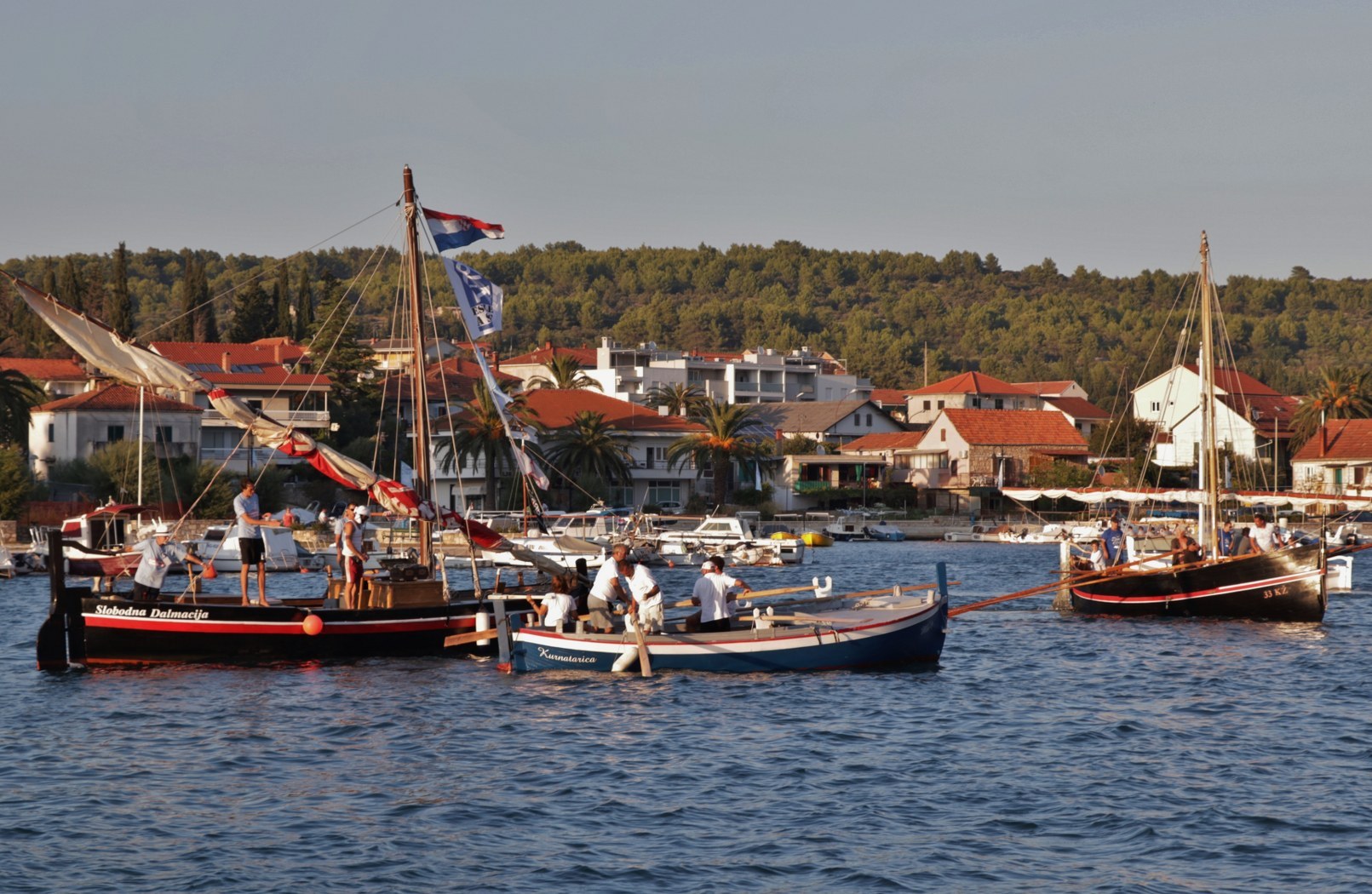
The Republic of Sloveniaespeciallyartner country and especially honoured guest of this year's Days in the Bay. Organised by the nautical journal and the E Morje portal, the Republic of Slovenia will be represented by the crews of five traditional ships with the support of the "Sergej Maser" Maritime Museum, the Faculty of Maritime Affairs and Transport, the Society of Old Boat Lovers from Piran, the Society of Old Boats from Izola and the Tourist Boards of Izola and Portorož.
Along with the daily promotional sailings of all participants, as announced by the organisers, there will also be a rowing regatta of the Komiža gundulas. At the same time, the youngest citizens of Stari Grad will try their hand at rowing.
One of the festival's attractions at sea will be the traditional rowing in which the female crew of the Neretva ship and the Slovenian cannon "Folega" will participate, equally alongside the male crew of the Croatian Navy boat.
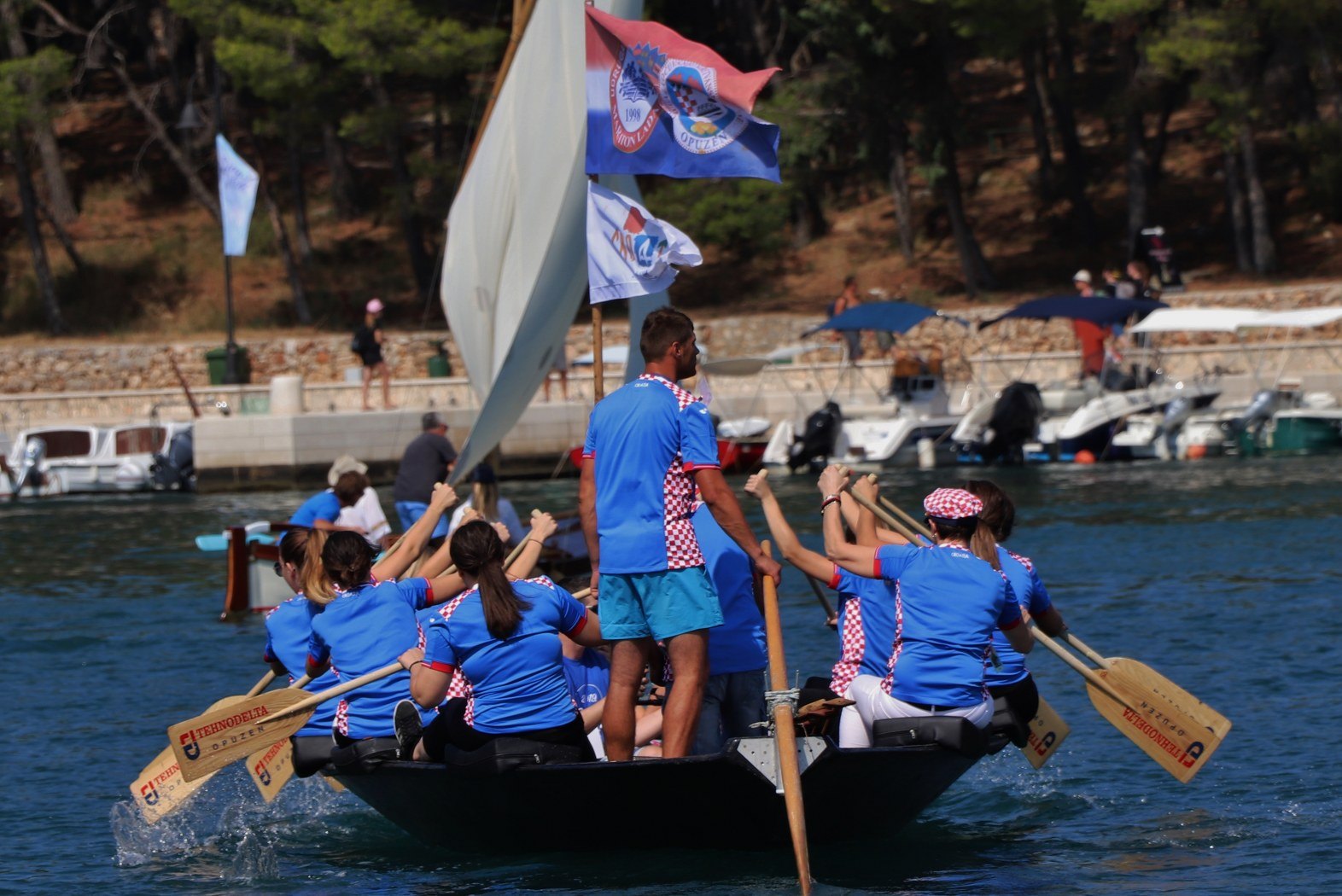
In addition to a specially designed sailing program of a show and competition character, various exhibitions and lectures on the theme of Croatian maritime tradition will be held during this international festival, while cultural and entertainment programs strictly appropriate for this type of event will be held on the legendary Tvrdalj square.
The festival program will also hold a place for the delegations of Stari Grad's friend cities of Samobor and Rugvica. They will present their region's customs, local products and gastronomic delicacies to the festival visitors.
The festival program at sea ends on Saturday, September 24, 2022, with a big night parade, "Dance of Sails and Lights", with light effects and music, and on land with a concert by the ABBA real tribute band.
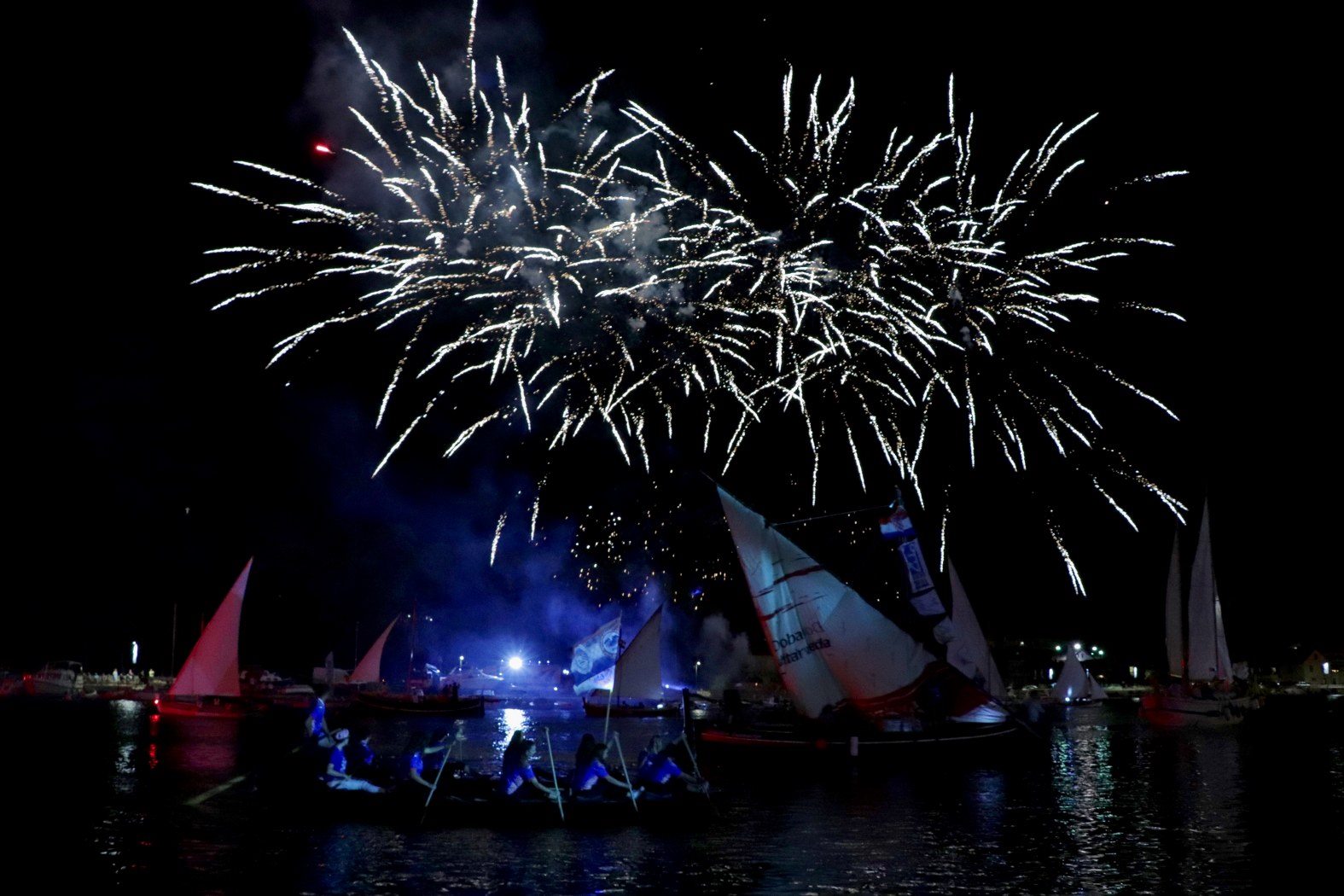
"We are pleased that Days in the Bay have been recognised not only by Stari Grad but also by the Split-Dalmatia County, the Croatian Tourist Association and the relevant ministries of the Republic of Croatia. We also highly appreciate the exceptional contribution and response to participation in the festival by all associations and shipowners from Istria to the south of Croatia because only together can we create a cultural event that will be recognised beyond Croatian borders," said Plamenko Bavčević, president of the Cronaves Association.

For the detailed program and to find accommodation on Hvar during the festival days, visit the Stari Grad Tourist Board's official website.
All photos courtesy of Dani u vali Facebook page.
For more, make sure to check out our dedicated Travel section.
HvarBanesco - Crafty Slavonian Grows Chili Peppers on Hvar
September 14, 2022 – Croatia is full of interesting people. You can find them anywhere, from your local pub to remote islands. Somewhere between the two, we reached Branko Presečan. Originally from Virovitica in Slavonia, where he still lives in the winter, Branko likes to move to the sunny island of Hvar in the summer, where he runs an unusual little business, and quite successfully so. Branko grows chili peppers and produces hot sauce, chili marmalade, chili olive oil, and more. Spice things up and meet HvarBanesco.
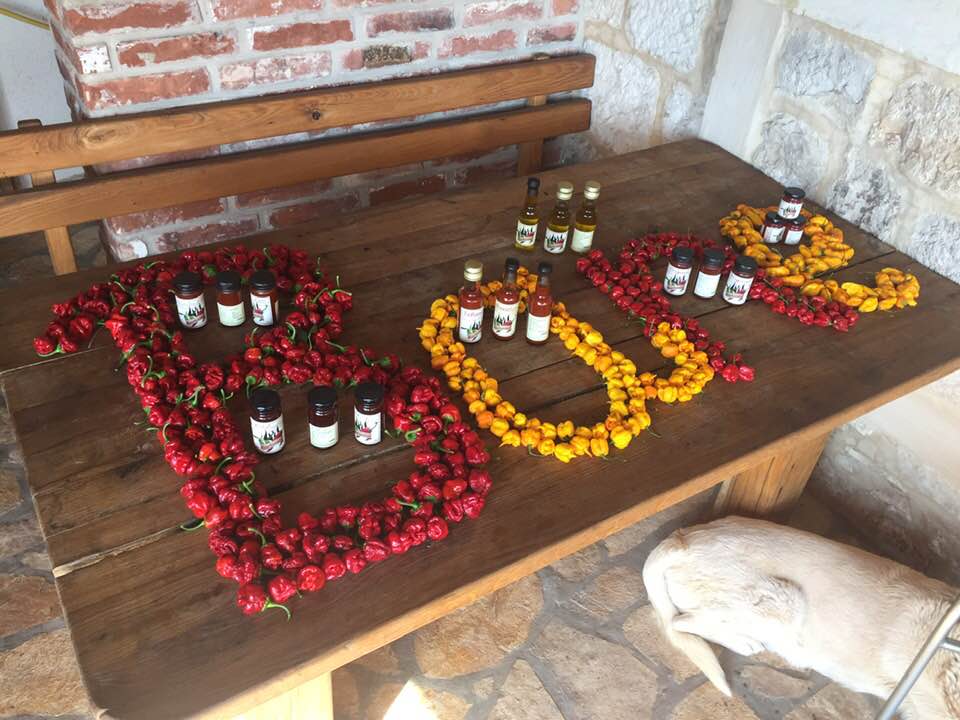
It all started when his young son developed allergies in 1997. That event took Branko to Hvar, where he decided to buy a house so that the boy could spend more time under the sun, in the fresh Adriatic air which tends to help. Things progressed little by little, Branko and his wife ran a few different businesses, such as a brewery, restaurants, and real estate. In 2015, as Branko says, he finally found his passion.

A lover of spicy flavours, he kept looking for sauces and products that would be spicy and tasty at the same time, and failing to find them. Naturally, he decided to buy some chili pepper seeds and try his hand at it. He started by planting a few plants and experimenting in the summer kitchen. Recipe by recipe, through trial and error, Branko managed to produce sauces, marmalades, and oils which range from spicy, to very spicy, to extremely hot, but all are fragrant and flavourful. He added that his favourite piece of feedback came from an American customer. Brian discovered Branko’s products by accident but stayed an unplanned three days in Hvar just for HvarBanesco, which he found to be the only hot sauce that packed actual flavour, not just acidity and spiciness.

In 2016 Branko started planting more of the little hot peppers, and in 2018 he opened HvarBanesco. He only plants five varieties of peppers – Jalapeno, Habanero, Bhut Jolokia, Jamaican Red, and of course, the world’s hottest Carolina Reaper. He sells his products to local restaurants and shops, and he runs a webshop, where you can buy some delicious spicy stuff from anywhere in the world. The only slightly problematic country, he says, is the United States, where the postage and customs reach dreadful highs.
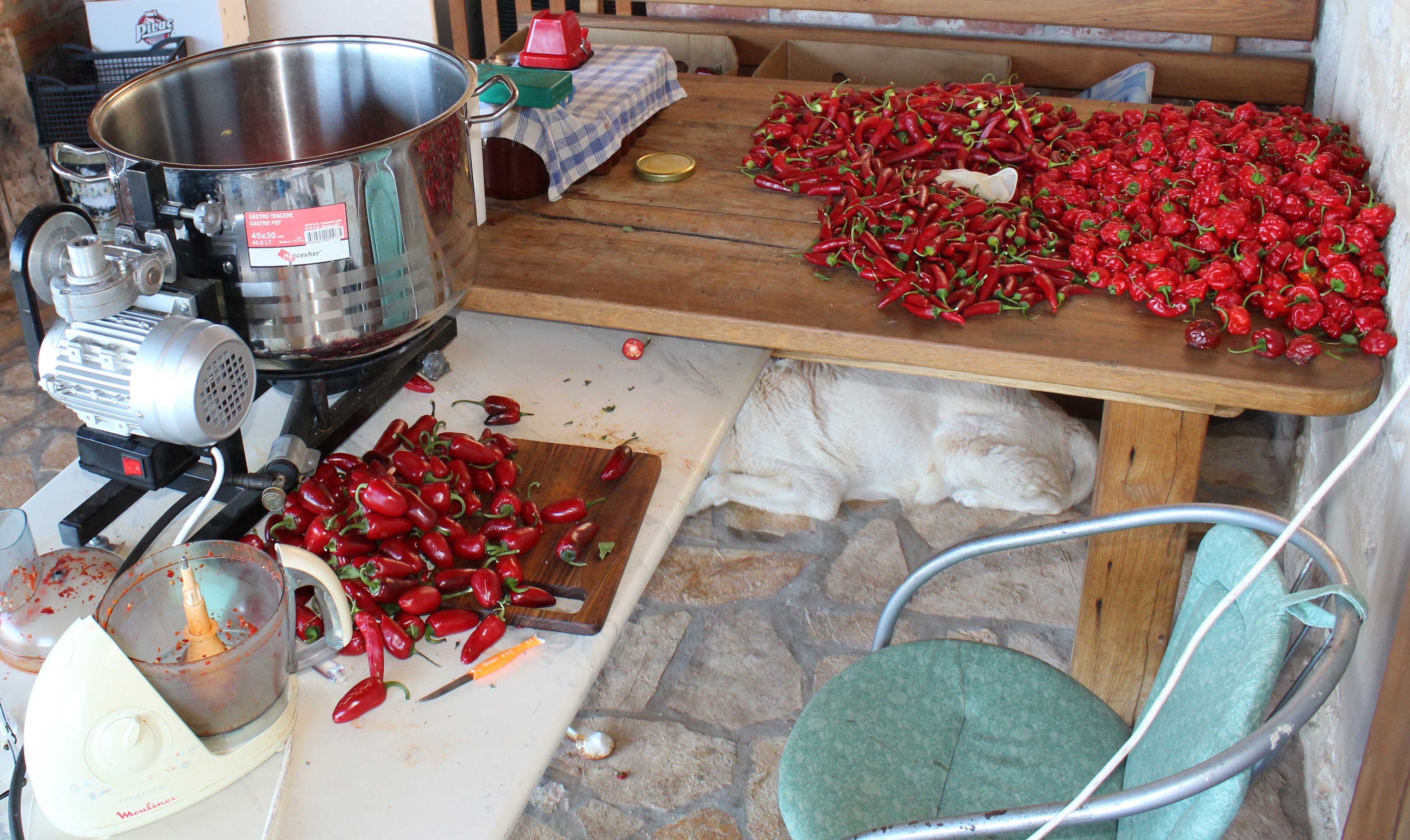
As for the organisation of work, Branko never tires and does it all on his own, from planting hundreds of plants, to picking them, to cooking. His family usually stays in Virovitica, though they do keep him company from time to time. Regarding future plans, Branko says he is quite happy with where he is at and doesn’t want to go commercial. He will keep experimenting in the kitchen though, perfecting the flavours, so stay tuned! If you’re feeling brave, try experimenting yourself, and get one of Branko’s Carolina Reaper products.
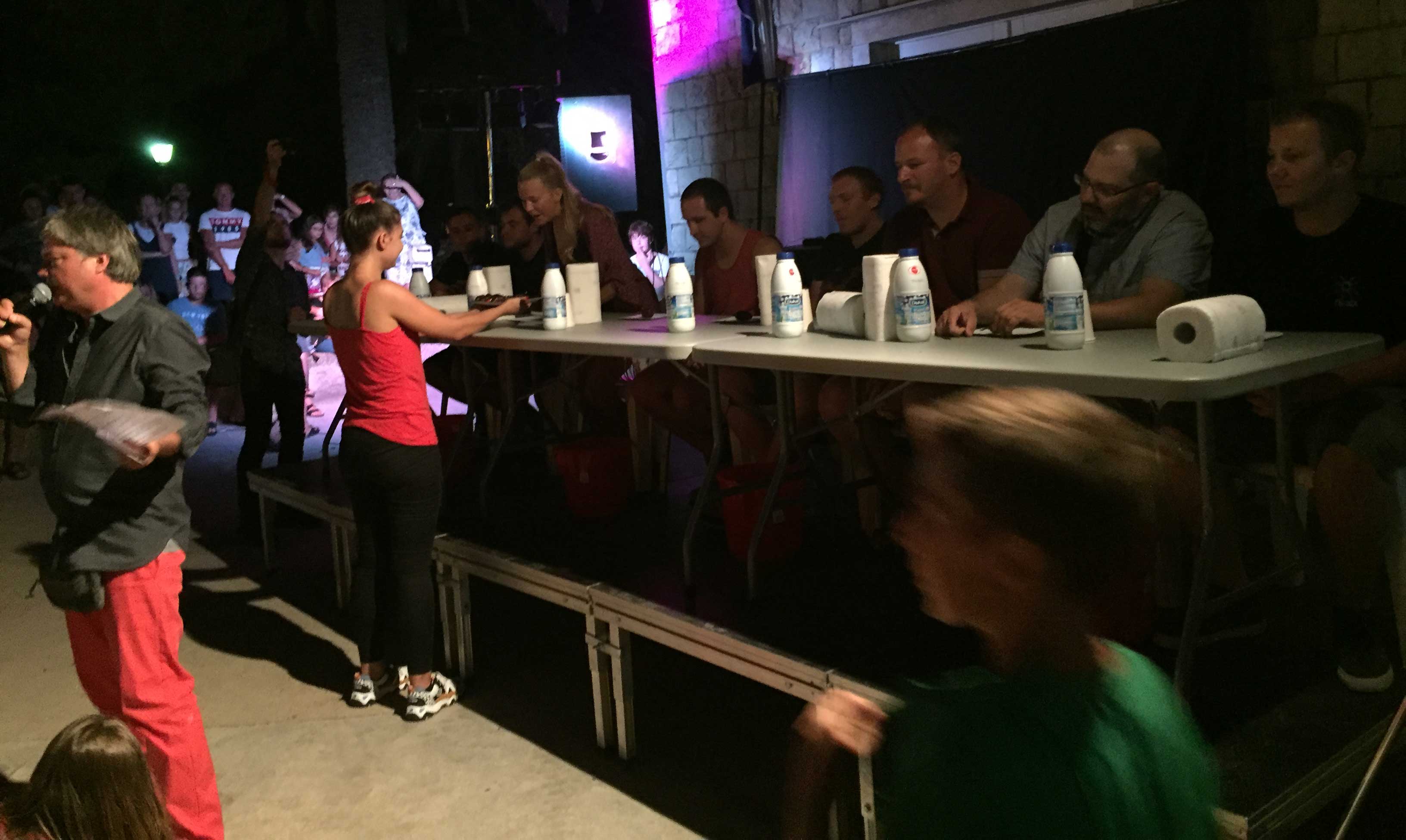
Chili pepper eating competition in Jelsa, Hvar.
All photos are courtesy of Branko Presečan and the HvarBanesco webshop.
For more, make sure to check out our dedicated Lifestyle section.
The Rise of Quality Hotels in Hvar Town and Stari Grad
July 23, 2022 - The Four Seasons may have never opened, but that didn't affect the quality of hotels in Hvar town and Stari Grad over the last few years.
International media has not been shy about Hvar as the hotspot of summer, but that's to no one's surprise. However, instead of praising Hvar Island as one of the best in Europe (well, it was named that again, too), a different aspect of Hvar is in the spotlight this time around, outside of the sun and sea - its hotels.
Hvar Island has seen its accommodations enhanced to another level in the last few years as the rise of quality hotels have taken the front seat - and Hvar Island is now the only Croatian island with three 5-star hotels!
So, who is international media raving about?
A look at the quality hotels in Hvar town and Stari Grad.
Let's kick things off with Hvar town jewel Palace Elisabeth, a 5-star heritage hotel and historic landmark that opened in 2019.
With a vibrant history that dates back to the 13th century, Palace Elisabeth was rebuilt in 1898 and renamed Spa Hotel Empress Elisabeth, after the Austrian Empress Sisi, a crucial asset to its construction. Hvar's oldest hotel and Empress Sisi inspired Sunčani Hvar's 100 million kuna investment to transform the 3-star Hotel Palace into Palace Elisabeth, the first 5-star hotel on the island. Costing nearly 300,000 euros per room, Palace Elisabeth was also one of the most significant investments in the Croatian hotel industry. With 45 rooms and suites, Palace Elisabeth offers refined luxury and timeless design and is a member of the prestigious The Leading Hotels of the World. And things have only gone up from here.
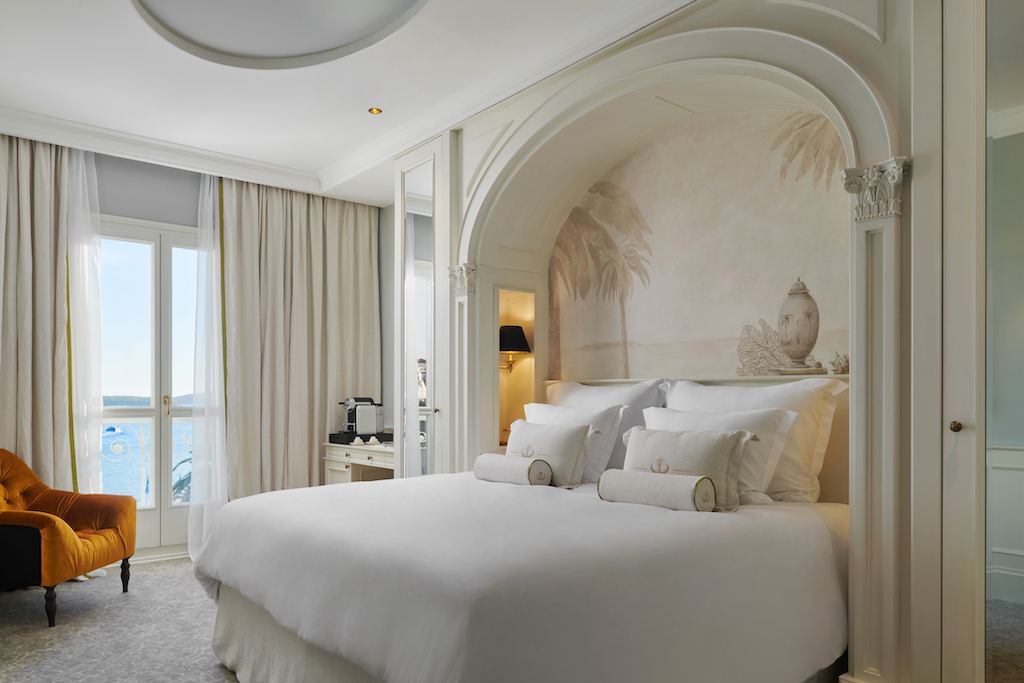
Suncani Hvar
Sunčani Hvar continued their investments to heighten Hvar town's hotel accommodation this year, also recognized by American business magazine Forbes.
Namely, the newly refurbished 4-star Beach Bay Hvar Hotel opened earlier this month as Hvar town's first-ever sustainable hotel, located just around the bend from the busy town harbor. The hotel's renovation revamped 21 rooms with many eco-friendly features for guests to enjoy an interpretive travel experience inspired by sustainable development and care for the environment. All rooms and suites also have a sea view!
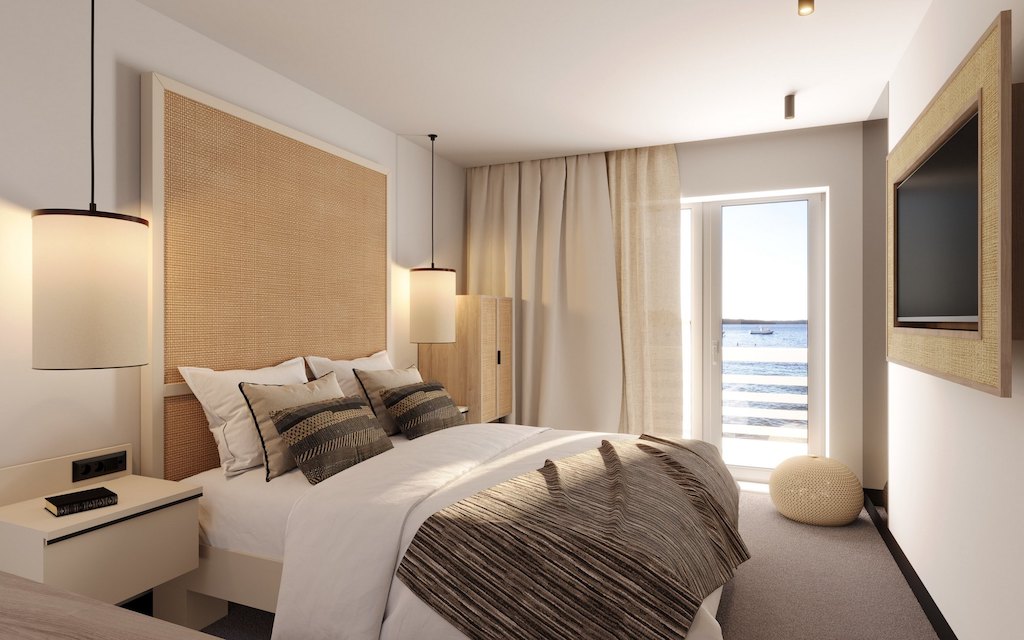
Suncani Hvar
Sunčani Hvar also pumped 40 million kuna into the newly renovated Riva Marina Hotel, one of the first hotels in Hvar town, which opened in 1914, or 15 years after Palace Elisabeth. Targeting guests primarily from the British and American markets who are after superior service and high-quality accommodation, Riva Marina offers 50 new unique rooms and suites and an upgraded restaurant and bar concept. And it's pretty hard to beat its iconic outdoor terrace with a view of the Hvar town's yachts and marina.
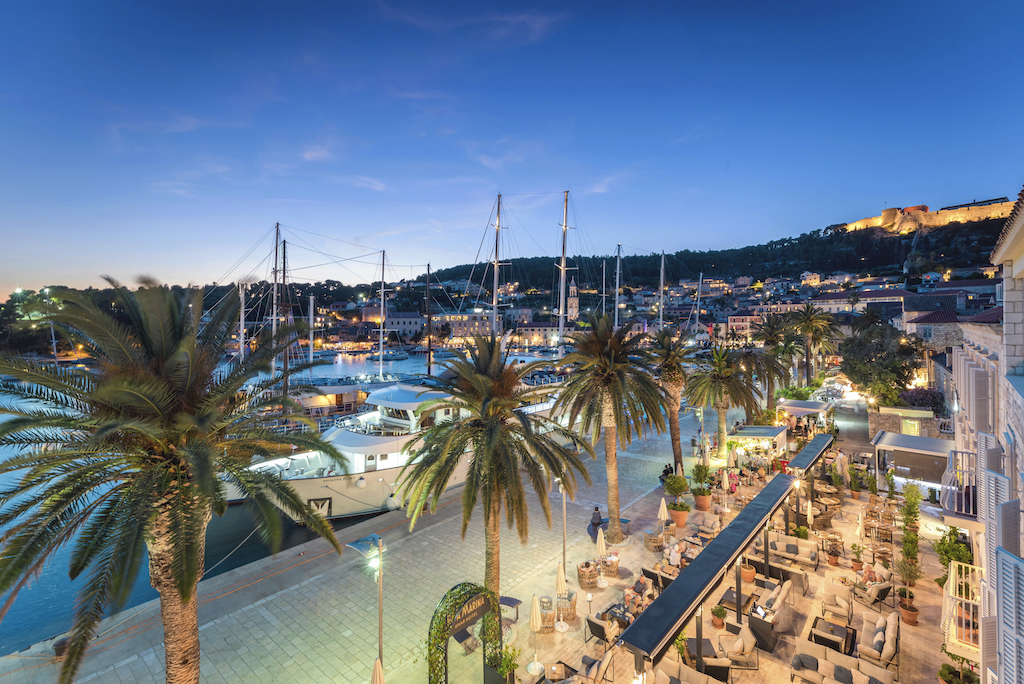
Suncani Hvar
Conde Nast Traveller also couldn't forget to mention the family-friendly Amfora Hvar Grand Beach Resort as one of the best hotels in Croatia this year, another product of the Sunčani Hotels brand.
Newcomer Moeesy Blue & Green Oasis Hotel was also applauded by Forbes as Hvar town's newest 5-star hotel just 10 minutes from the city center. With foundations dating back to 1929 (formerly known as Hotel Croatia), Moeesy has 37 rooms and four suites, pools, and a beautiful garden, spa, and Mediterranean restaurant. Its green area spans approximately 5000 sqm!
And that's just Hvar town.
The Daily Mail recently revealed it was smitten with Stari Grad, especially the 5-star Maslina Resort, a Relais & Chateaux hotel that opened in August 2020. Applauding its 'Mindful Luxury' philosophy which is seen at first glance as the facade 'blends seamlessly into the pine-tree-clad hillside,' Maslina Resort has revived Maslinica Bay with 50 rooms & suites and three villas, a standout spa, Michelin-recommended restaurant, beach bar and beach area where high-end hospitality is king. Conde Nast Traveller also named Maslina Resort one of the best hotels in Croatia this year, where Hvar's history as a well-known healing destination (since 1868) is reflected in its philosophy. A savvy, safe and serene choice away from the hustle and bustle of Hvar town.
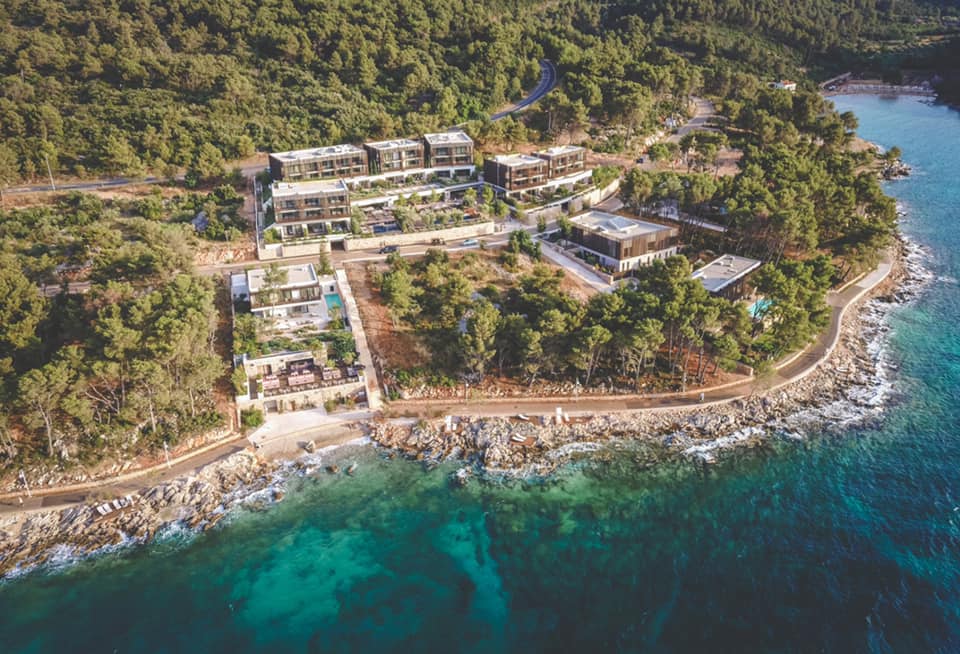
Maslina Resort
But Maslina Resort isn't the only newcomer to Stari Grad. The Valamar [PLACES] lifestyle hotel brand launched last year with the opening of HVAR [PLACESHOTEL] by Valamar, designed for travelers seeking "freedom of choice and a vibrant Mediterranean holiday in a hotel by the sea." Taking over the former hotel Lavanda, HVAR [PLACESHOTEL] by Valamar welcomed a 53 million kuna investment to reinvent accommodation suitable for the millennial generation. Offering 179 rooms, a pool complex, bars, DJs, modern design, and smart features like cashless payment and contactless check-in, this hotel is also only 50 meters from the sea.
And all this without the Four Seasons ever opening.
For more, make sure to check out our dedicated travel section.
Travel + Leisure's 20 Best Islands in Europe: Hvar and Dalmatian Islands #9
July 13, 2022 - Travel + Leisure readers choose the best islands in Europe based on fabulous food, rich history, and beautiful surroundings. Hvar and the Dalmatian Islands take #9!
Travelers are once again exploring the world with gusto, and, as always, our intrepid readers have led the way. For this edition of our annual survey, hundreds of thousands of you reflected on recent journeys and shared your thoughts on hotels, islands, outfitters, national parks, and much more. Cheers to the best readers—and finest travel experiences—on the planet! - Travel + Leisure.
The World's Best Awards survey is back, where Travel + Leisure readers rank the best travel experiences worldwide, from top cities, islands, cruise ships, spas, and airlines to hotels, resorts, and more.
And in the World's Best Awards, the best islands in Europe were chosen by readers based on their activities and sights, natural attractions and beaches, food, friendliness, and overall value.
Ischia Island in Italy, just off the coast of Naples, took the cake this year as the #1 island in Europe. The volcanic island in the Tyrrhenian Sea was praised for its quaint towns, natural hot springs, and standout hotels, including the 128-room grande dame Regina Isabella and the 73-room San Montano Resort & Spa.
And while islands in Greece, Portugal, Spain, and France helped make up the top 10, it wouldn't be the 'best islands in Europe' list without mentioning Hvar and Dalmatia.
Namely, Hvar and the Dalmatian Islands came in at #9 this year, receiving an impressive 87.60 rating by readers!
But are we really surprised?
Hvar is a haven in the summer where glitz and glamour meet authentic experiences. The star-studded harbor is often decked out with luxury yachts, complemented by a series of standout hotels and restaurants from the Sunčani Hvar hotel group and, notably, the best nightlife on the coast.
Hvar and Dalmatia have been increasingly voted as go-to destinations in Europe over the years, and you may remember that Hvar was voted the #1 island in Europe in the Condé Nast Readers’ Choice Awards last year!
You can find the complete list of Travel + Leisure's 20 best islands in Europe here.
For more on travel in Croatia, follow TCN's dedicated page.
Hvar: Croatia's Lavender Island
July 11, 2022 - Hvar, also known as Croatia’s lavender island, has plenty to offer to any lucky visitor during the Mediterranean summertime. With its lavender flowers blossoming during the early summer days – in June and July – tourists and locals embrace the intoxicating scent of domestic herbs from all around!
The island of Hvar is located in the Adriatic, off Croatia's famous Dalmatian Coast, and is well known for being the sunniest spot in the country. By having dry, chalky soils and long sunny days, the colourful Croatian island provides a perfect place for growing the plant that is widely known for its various benefits. Being used in medicine, cosmetics production, and even cooking, lavender production is still very significant to the residents of Hvar.
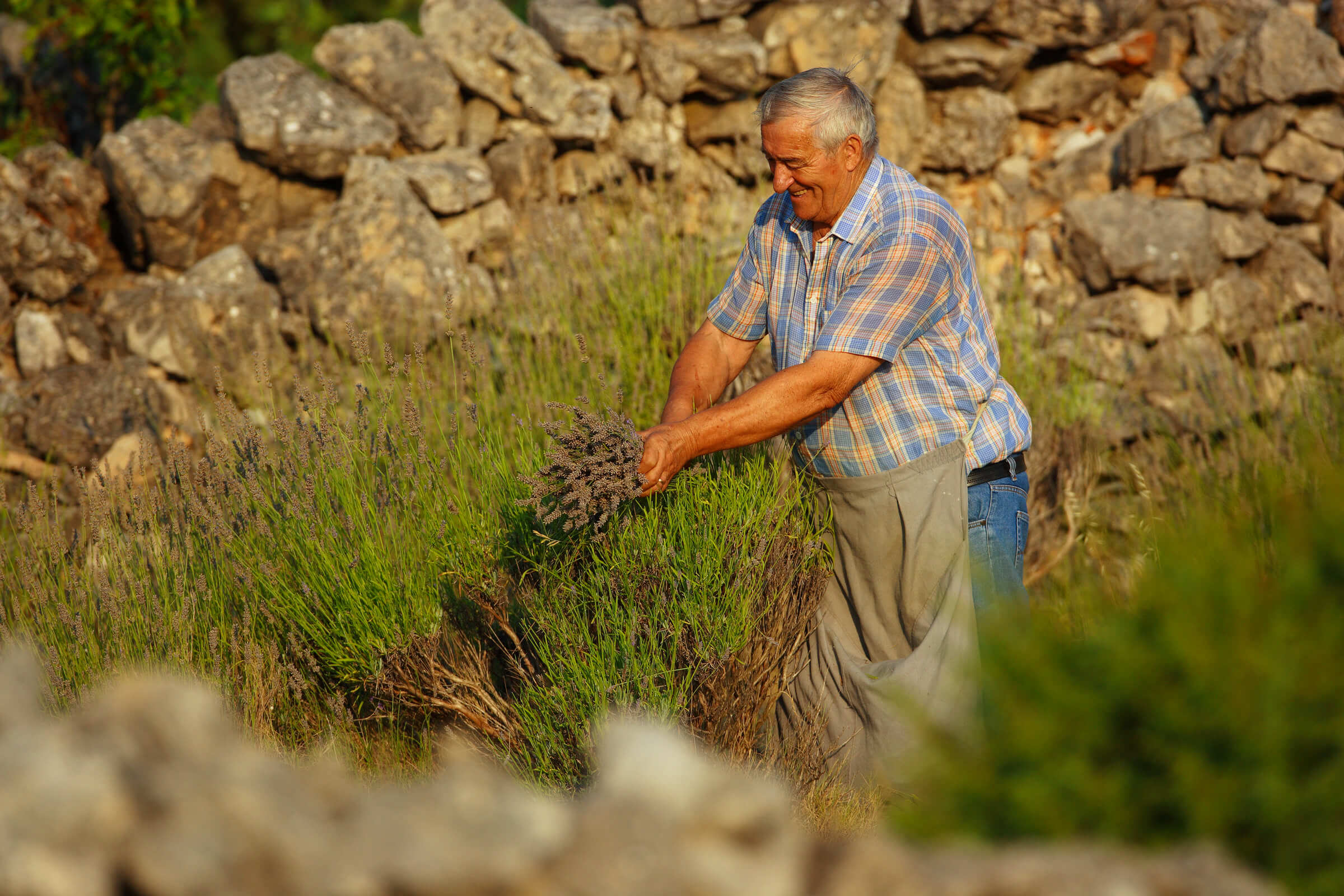
Photo: Romulic & Stojcic
Although lavender cultivation on Hvar began all the way back in 1930 and its production has declined over the years due to a combination of emigration and devastating forest fires, the Hvar Lavender Festival continues to revive both the lavender tradition and its heritage every summer. In late June, Velo Grablje marks the start of the harvest time as it hosts exhibitions, presentations, workshops, and even concerts. Therefore, the annual two-day Lavender Festival attracts visitors from all over the globe to celebrate all things lavender!
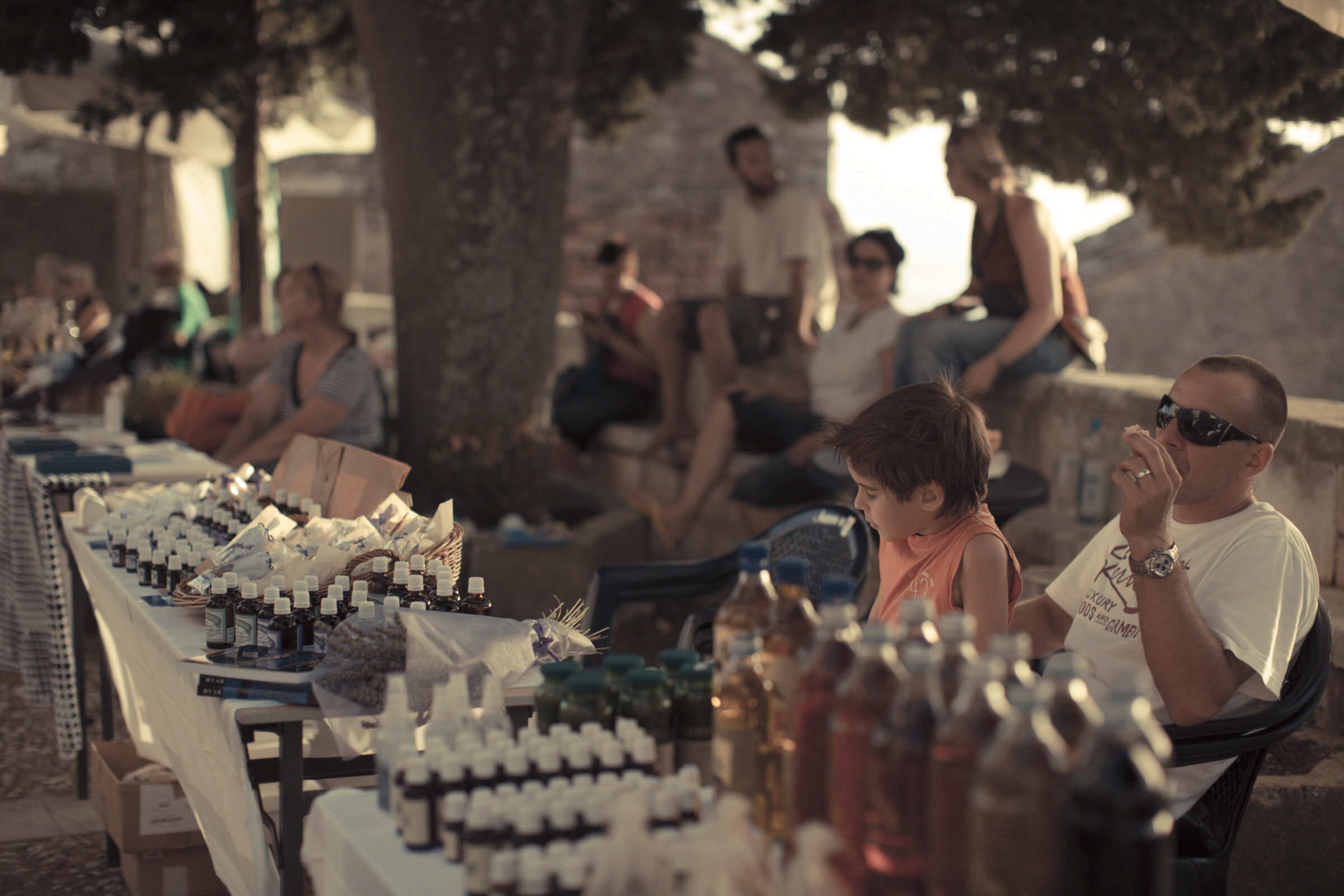
Photo: Romulic & Stojcic
As the air gets full of fragrance and the hills are covered in purple shades, freshly made lavender souvenirs appear in all local markets and shops. Workshops hosted by generous villagers and medicinal herb experts aid in filling the quiet island of Hvar with laughter and conversation. And just like every year, the little island showcases its big welcoming heart for visitors to explore the Lavender Festival and the cobblestoned streets of Stari Grad.
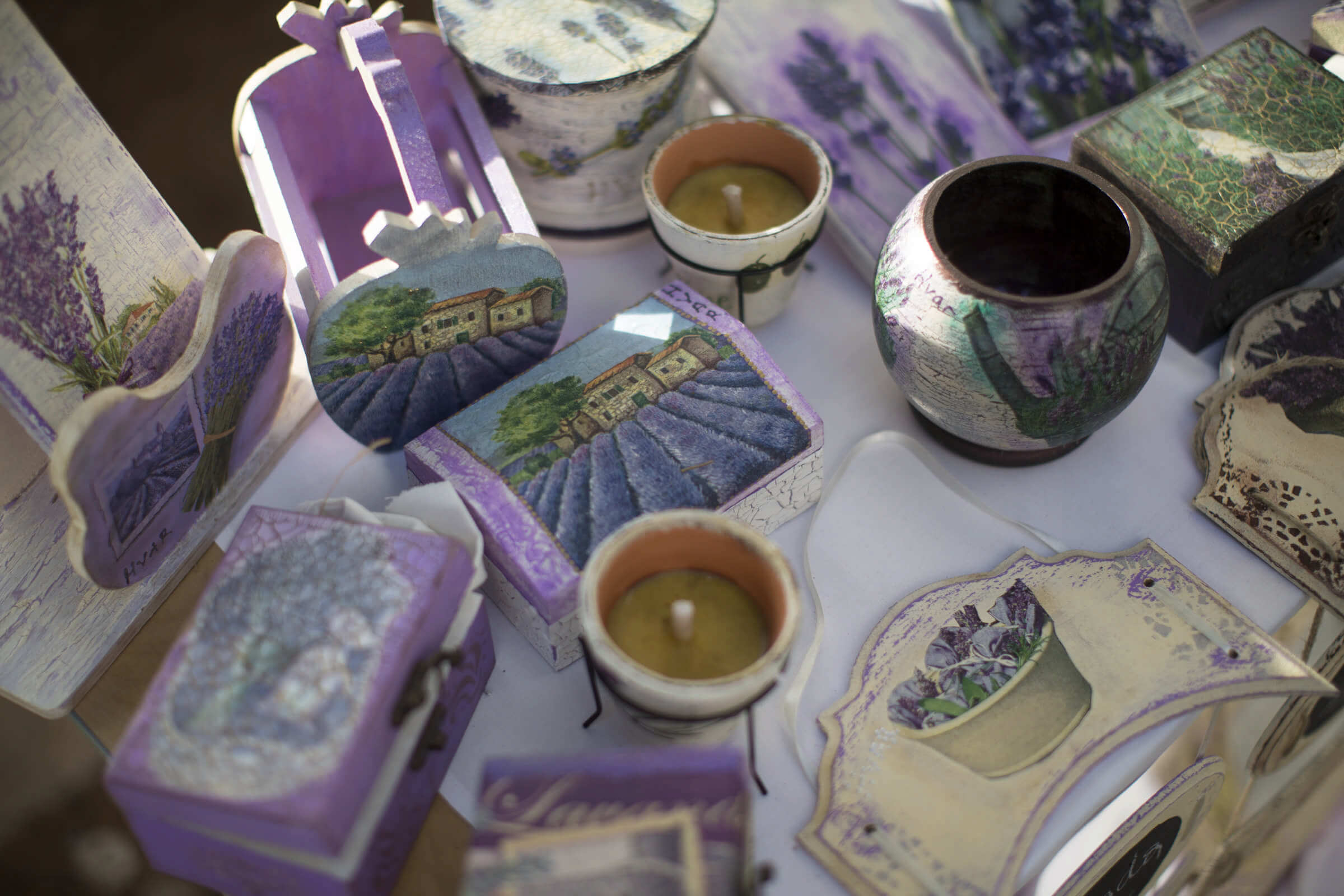
Photo: Romulic & Stojcic
Most of Hvar's lavender fields are located around Zastražišće, Gdinj, Bogomolje, Brusje, Grablje, and along the road from Stari Grad to Hvar. So, to see Hvar lavender, it is advised to take a ferry to the island and experience the aroma of the wild herbs and their constant intensity, as it will linger on with you for the rest of your life!
For more on travel in Croatia, follow TCN's dedicated page.
Vlaka Bay Fire Breaks Out Near Hvar Island (VIDEO)
June 30, 2022 - The Vlaka Bay fire broke out this morning just before 9 am. Around 25 firefighters and two Canadairs are at the scene.
Boats sailing around Hvar this morning noticed a fire in Vlaka Bay, on the Pakleni Islands, not far from Hvar Island. Thick smoke billowed over the middle of the bay, reports Jutarnji List.
The first report of the fire arrived at 8:47 am. The dense pine forest, low vegetation, and grass are burning. There are 25 firefighters from the Voluntary Fire Brigade (DVD) Hvar on the ground, and two Canadairs came to their aid. Although it is burning near houses, they are not currently endangered.
The fire is high on the hill, and it is partly difficult to access, which is why two Canadairs came to the aid of firefighters, said the duty officer of DVD Hvar.
"Around three hectares have burned. We hope that the Canadairs will solve the majority of the fire this morning. There is no threat to people and facilities," said DVD Hvar.
According to first-hand accounts, the southerly jugo wind had turned the fire to the north side of the island instead of closer to the restaurants in the bay.
Vlaka Bay on the island of Sv. Klement is a traditional Hvar resort with several restaurants in a small village where there is a church from the 14th century dedicated to Sv. Klement. There are also Roman dwellings in the area as well as Illyrian mounds.
More soon...
For more news in Croatia, follow TCN's dedicated page.
Hotel Riva Marina in Hvar Town Opens to First Guests Today!
June 3, 2022 - The newly-renovated Hotel Riva Marina in Hvar town opens today!
Situated in the Hvar city center, this historic gem boasts 50 uniquely decorated rooms and suites and a stunning terrace with outdoor seating and a bar area. The hotel was completely renovated this year.
Namely, Suncani Hvar Hotels completed the 40 million kuna renovation of Hotel Riva Marina to ensure it would be ready for its June opening.
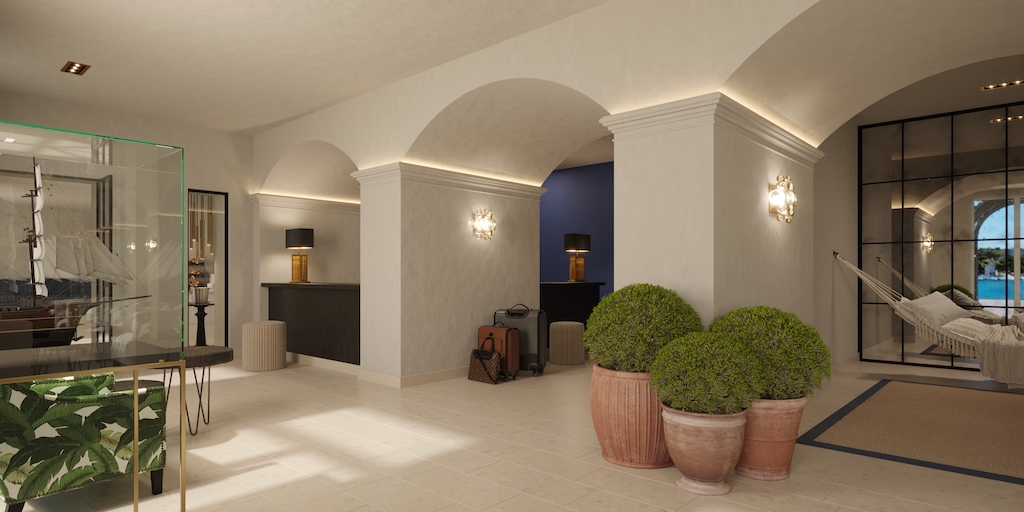
Hotel Riva was one of the first hotels in Hvar town, opening in 1914, precisely 15 years after the historic Hotel Elisabeth. It was named Hotel Kovačić after the initial founder of the hotel and named 'Riva' in 2006 when it was completely renovated. In 2022, this century-old hotel with striking and original architecture changed its name to Riva Marina, emphasizing its first-class position in the heart of Hvar's marina. The hotel is intended for guests who expect superior service and high-quality accommodation and will primarily be focused on the British and American markets.
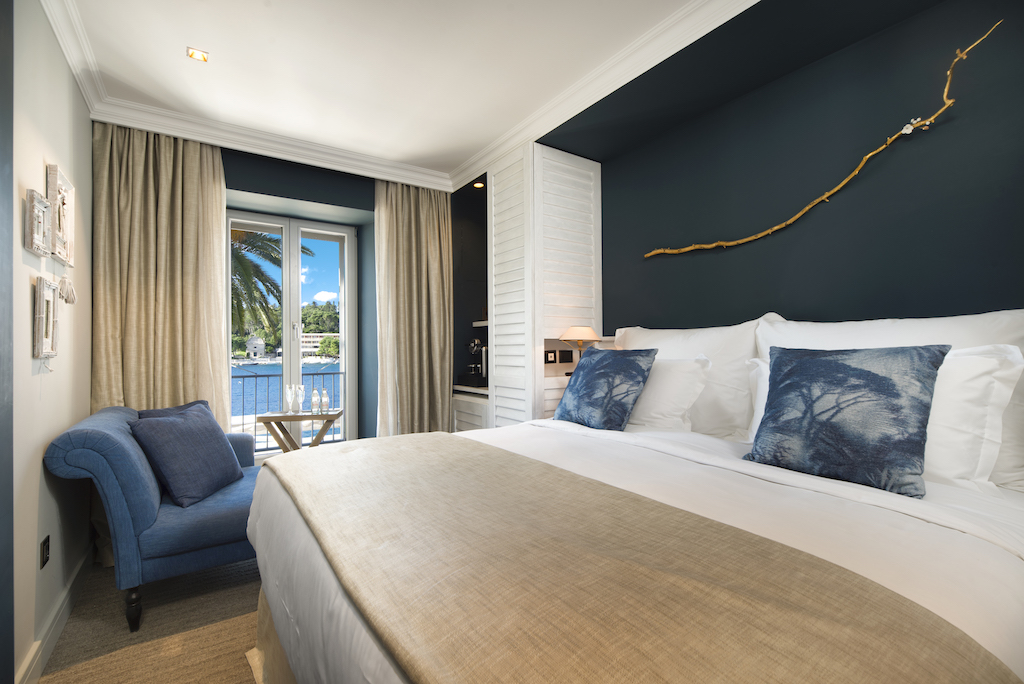
Thus, the Riva Marina Hotel has 50 new unique rooms and suites made for complete comfort and enjoyment. The carefully designed and executed interior design further emphasizes the historic building itself and its quality is harmonized with the most prestigious Hvar hotel Palace Elisabeth. The newly renovated hotel boasts a restaurant and bar, designed according to the latest standards and adapted to modern world travelers. Guests can enjoy a variety of delicacies and drinks on the iconic outdoor terrace with a unique view of the yachts and marina.
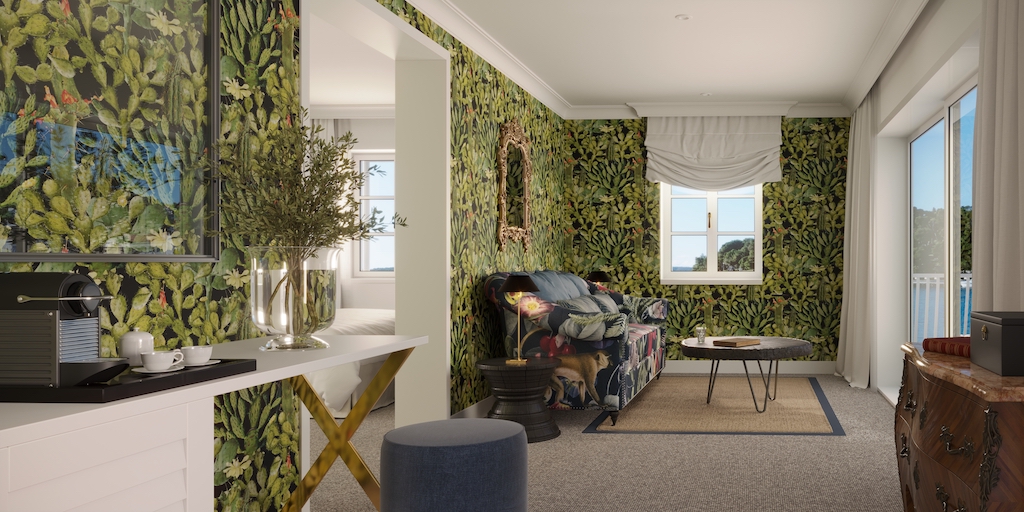
The project was entrusted to the architectural studio Tissa from Poreč, the interior design by Oto Blaha, and the contractor Kvantum from Zagreb.
Book your dream Mediterranean getaway today by visiting the Suncani Hvar website. And don't forget their other hotels on the island, including Palace Elisabeth, Adriana, Amfora, Beach Bay, Pharos, and Hotel Delfin!
For more, make sure to check out our dedicated lifestyle section.
24 Hours in Stari Grad: For Those Seeking a More Laid-Back Experience
May 13, 2022 – Come with me as I explore different facets of this rustic jewel in this 2-part series, as we spend 24 hours in Stari Grad, one of Hvar's most popular towns.
With an average of over 2715 hours of sunlight a year, the Croatian island of Hvar offers plenty of fun in the sun. From its series of natural wonders including fresh springs, fruit orchards, lavender fields, and award-winning vineyards, to the allure of its world-renowned nightlife, Hvar is guaranteed surpass even the highest of expectations.
A brief history of Hvar
Did you know that the history of Hvar dates back over 5000 years? The earliest inhabitants of Hvar Island were the Neolithic people in 3500 B.C. During the 4th century, Hvar was initially colonized by Greeks, but following the Roman victory in the Second Illyrian War, the island became a part of the Roman Republic.
The island joined the Kingdom of Croatia in the 11th century but eventually fell under Byzantine rule, before becoming a part of the Kingdom of Croatia and Hungary in the 12th century. In 1409, the Venetian Republic regained the right to rule Hvar for over 5 centuries, before it was annexed by the Habsburg monarchy in 1979.
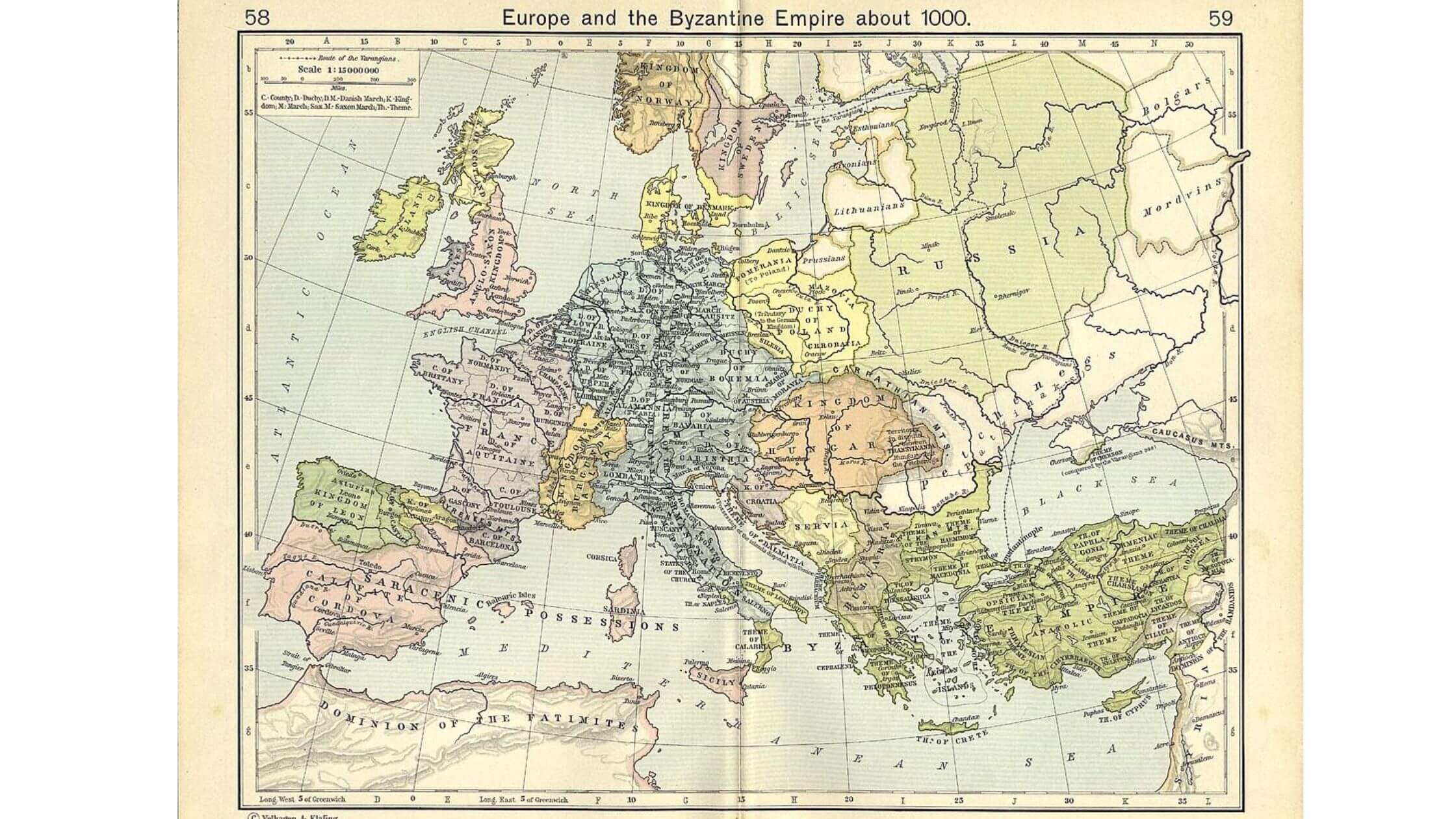
A map of Europe in 1,000 A.D. with the Kingdom of Croatia. (Image: Wikimedia Commons)
Over the next decades, Hvar changed hands a few more times. The French Empire seized the island in 1806 during the Napoleonic wars, before it fell under British rule in 1812. In 1815, Hvar was controlled by Austrians, before it was occupied by the Italian army from 1918 to 1912 under the Kingdom of Yugoslavia. Finally, after the end of WW2 in 1945, it became a part of the People's Republic of Croatia.
Right, that was essentially Hvar’s 5,000-year history, brutally squeezed into 3 short paragraphs, but since we only have 24 hours, let’s begin a full day of activities in Stari Grad. Not only does this town attract a more relaxed clientele, as you’ll see, it’s also much cheaper than neighboring Hvar town!
8.30 a.m - 10.30 a.m.
The majority of Hvar visitors begin their trip at the Split ferry terminal. In Summer, the state-owned Jadrolinija ferries or catamarans run regular service lines to 3 different ports on Hvar: Split-Hvar, Split-Jelsa, and Split-Stari Grad.
From Split-Hvar, a catamaran runs almost every other hour, with the earliest ferry leaving Split at 8.30 a.m. Prices for the catamaran are the same for both children and adults, at 110 kuna (€14.50) one way. The Split-Jelsa catamaran first detours to Bol on Brač island (so the line really is Split-Bol-Jelsa), and only runs once a day, departing Split at 4.30 p.m. Tickets are 63 kunas (€8.40) per adult and 30 kunas (€4.00) for children between 3-12 for a single trip. Do note that the catamarans are foot/pet traffic only!
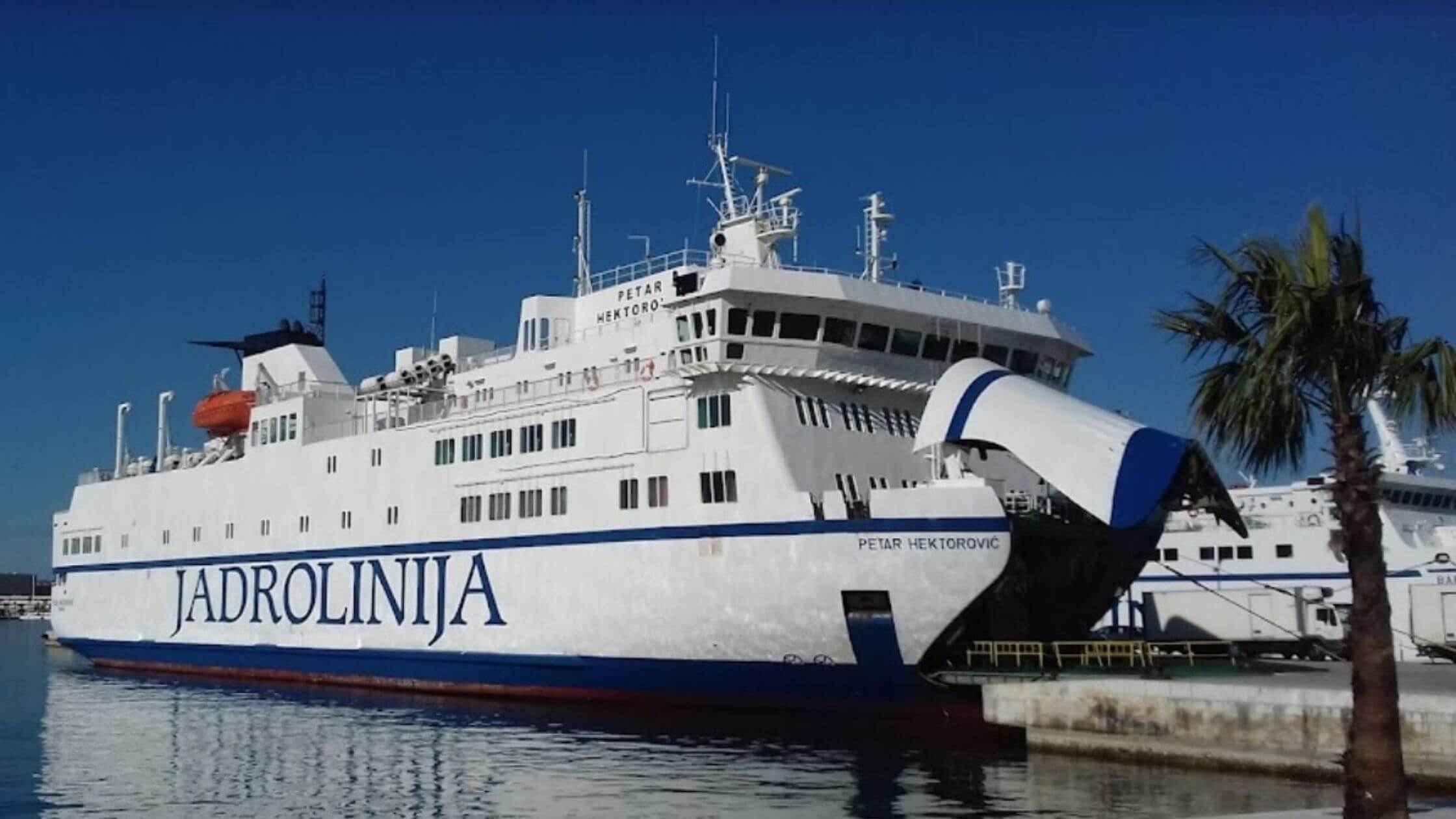
(Image: Stipo Rajic/Screenshot)
Finally, we have the ferry line that will kick start our trip from Split-Stari Grad. Leaving Split as early as 1.30 a.m., the Split-Stari Grad ferry service runs 7 times a day at the peak of the season. Since it’s a ferry, you’ll be able to drive your vehicle on board so if you’ve rented a car in Split and intend to drive it over Hvar Island, this will be your port of call as well. Prices start at 55 kunas (€7.40) for an adult and 27.50 kunas (€3.70) for children 3-12, for a one-way journey.
10.30 a.m. - 11.30 a.m.
A 2-hour ferry ride later and you’ve arrived in Stari Grad, Hvar Island. The first thing to do is to drop your bags off at your accommodation and make a beeline to Stari Grad’s palm-lined Riva.
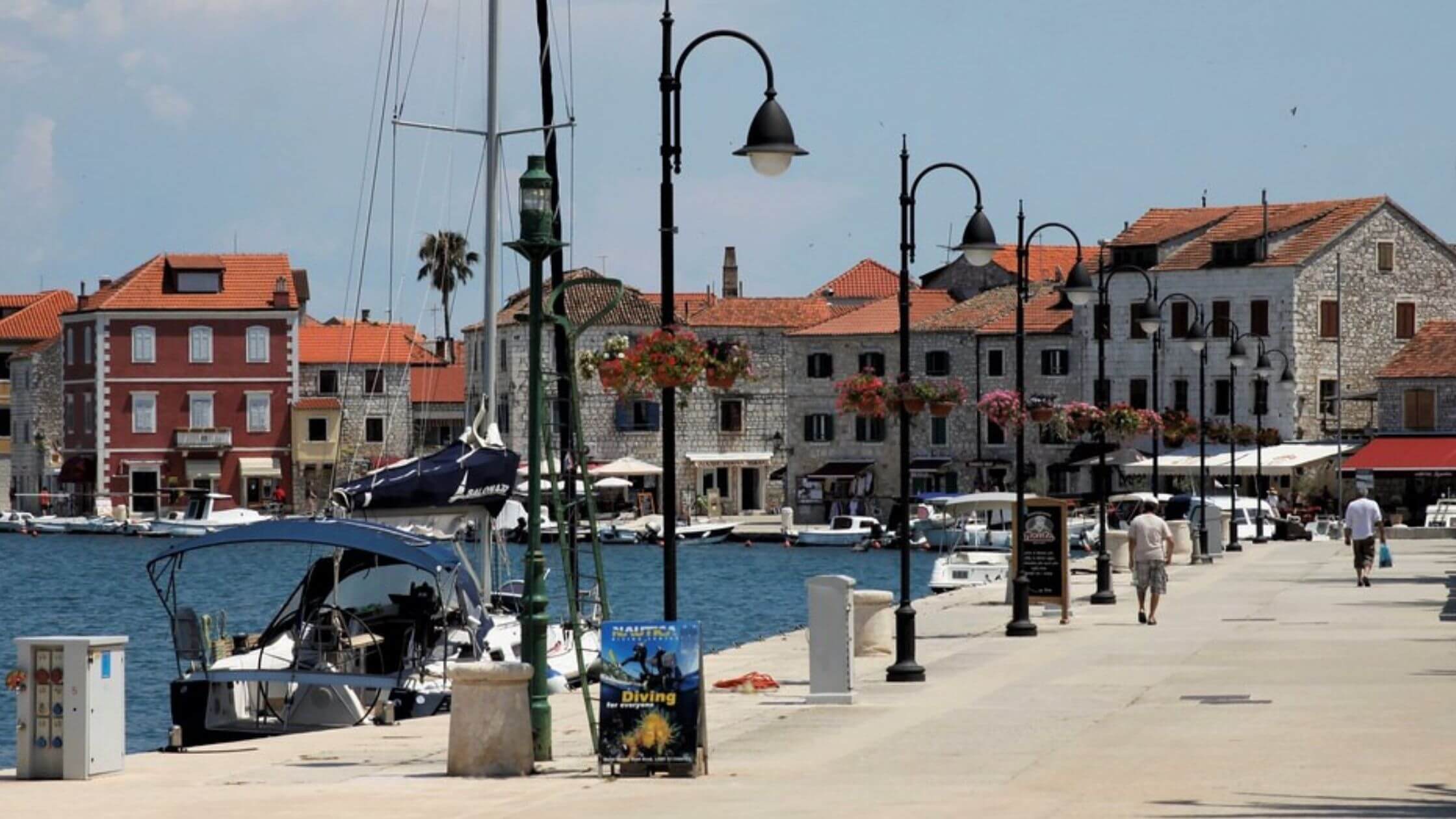
There's no better place to relax and let your mind wander. (Image: Pixabay)
Surrounded by Venetian Renaissance buildings, the Riva is the heartbeat of the city. Here, you’ll find everything you need including cafes, bars, restaurants, souvenir stands, boutiques, and grocery stores. It’s perfect for a spot of people watching while snacking on some Burek (Croatian flakey pastry filled with a combination of cheese, meat, and spinach) with your coffee or Aperol Spritz (I mean, you’re on vacation, and its noon somewhere, right?)
11.30 a.m. - 1.30 p.m.
With your energy levels renewed, time to do some exploring! For 20 kunas (€2.65), head on into Tvrdalj fortress, the summer residence of Croatian Poet Petar Hektorović (1487-1572). Cocooned in this oasis, Hektorović produced some of his finest poetic works on Hvar’s fishermen such as – Ribanje i ribarsko prigovaranje, 1568, eventually becoming a vital figure in Croatian literature during the Renaissance period.
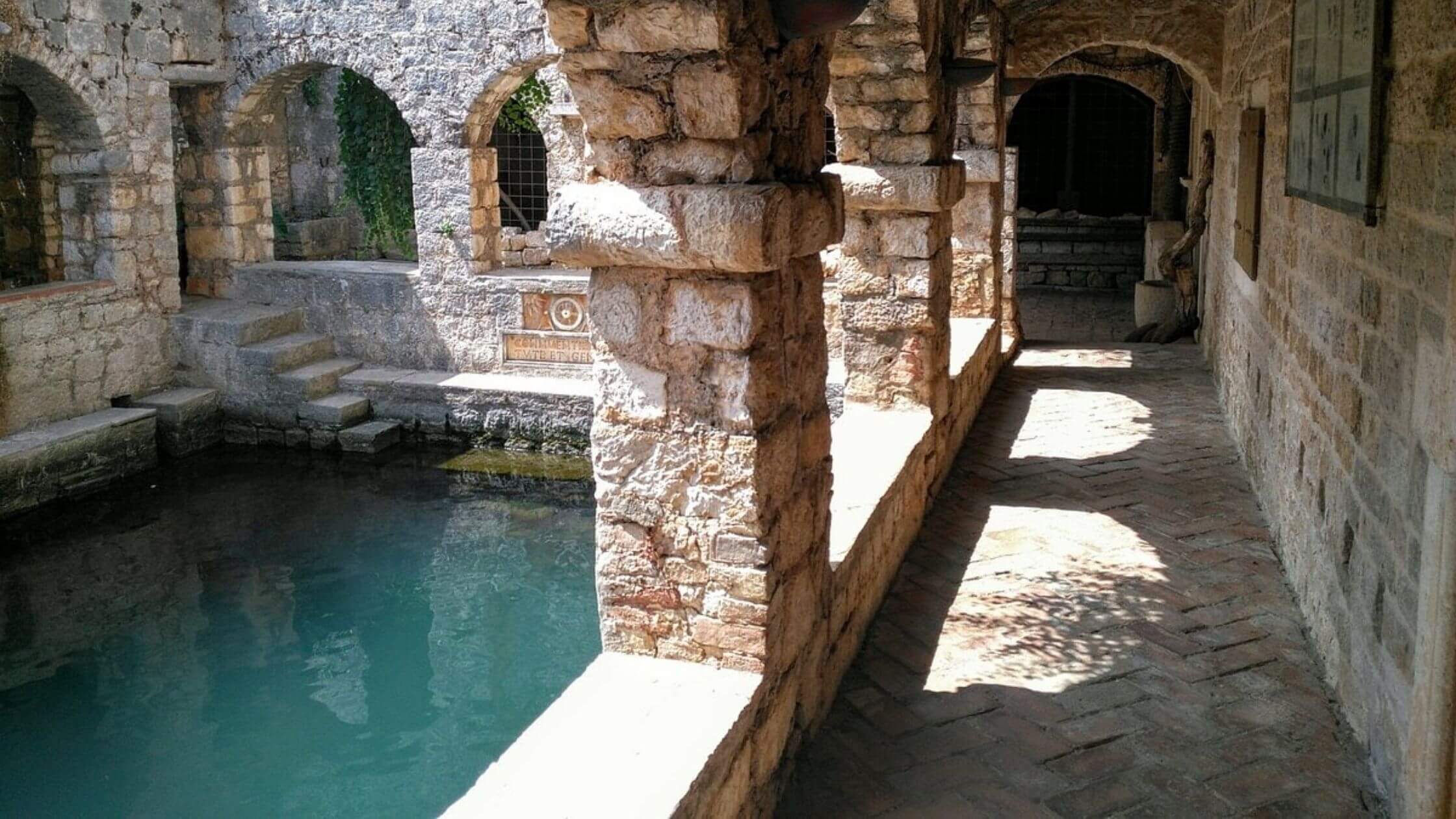
Step inside the calm of Tvrdalj fortress. (Image: Alain C.)
In the vicinity are also a series of churches such as the Church of St. Stephens, built-in 1605 on the same site of a previous cathedral that was destroyed in 1571 during a Turkish invasion. There is also the church of St. John which houses archaeological remains of the original building that dates to the 5th or 6th century, and the church of St. Petar Muenik and the Dominican monastery that was founded in 1482.

Church of St. Stephens. These churches contain many important artworks by famous Venetian artists which are still on display today. (Image: Rory321)
Make sure to make time for wandering around the backstreets of Stari Grad to admire the architecture and take the opportunity to stop by Škor Square for a series of highly-instagrammable pictures. If Mamma Mia had another prequel (or sequel?), this be an ideal setting with its curved archways, stone houses, shuttered windows, and quaint staircases.
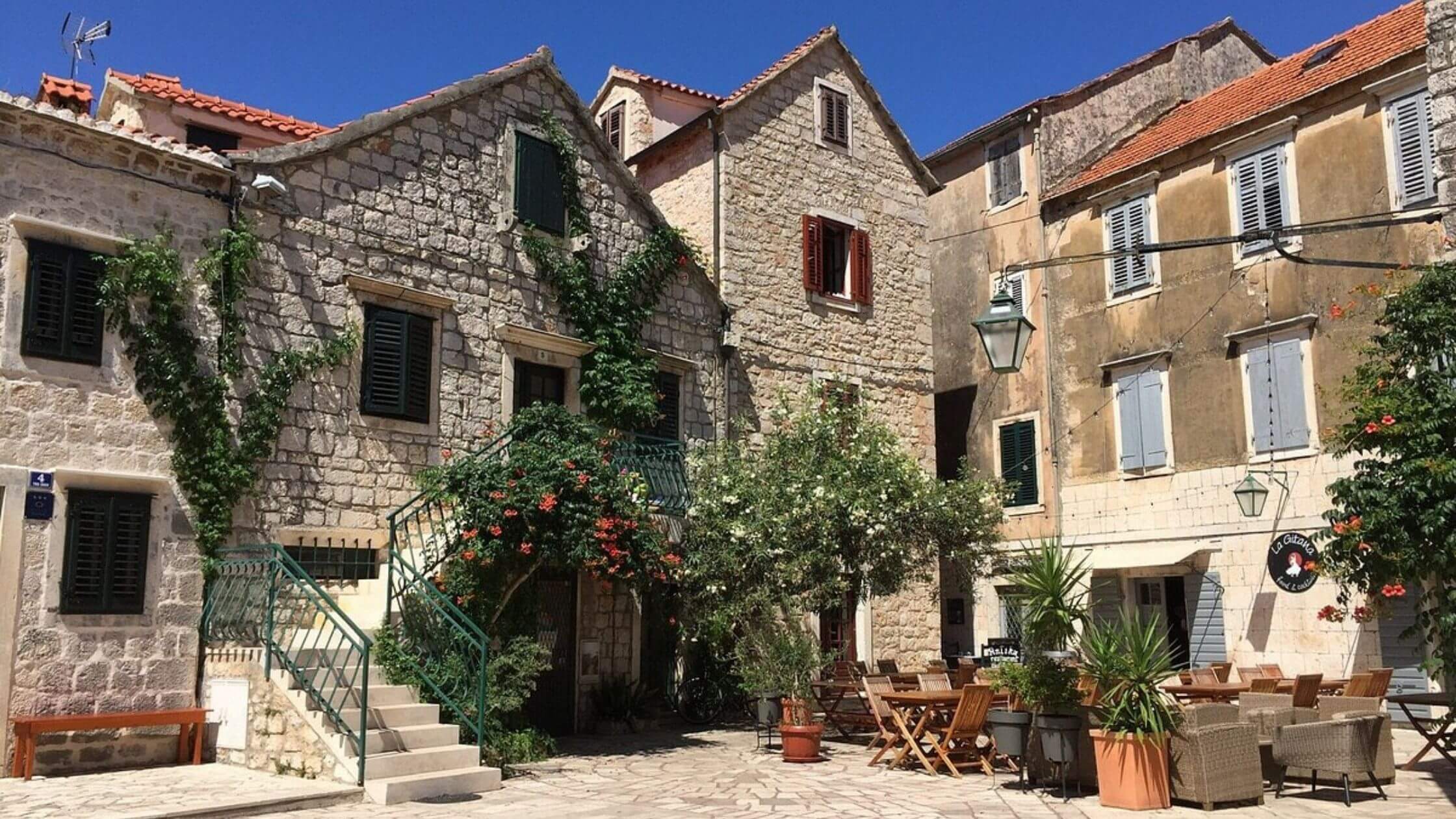
The word škor derives from the word škver, meaning shipyard in the Dalmatian dialect. (Image: Chrissieb94/Tripadvisor screenshot)
Also wander along Srinjo Kola (translated to: Middle Street), one of the busiest and largest streets on Hvar Island during the 1870s and 80s, when maritime trade in the region was at its peak. Once bustling with merchants and traders from all over Europe, Srinjo Kola today has more of a bohemian vibe, housing quaint cafes and traditional souvenir stores. Don’t forget to peek at the ancient Roman mosaic discovered during an excavation last year!
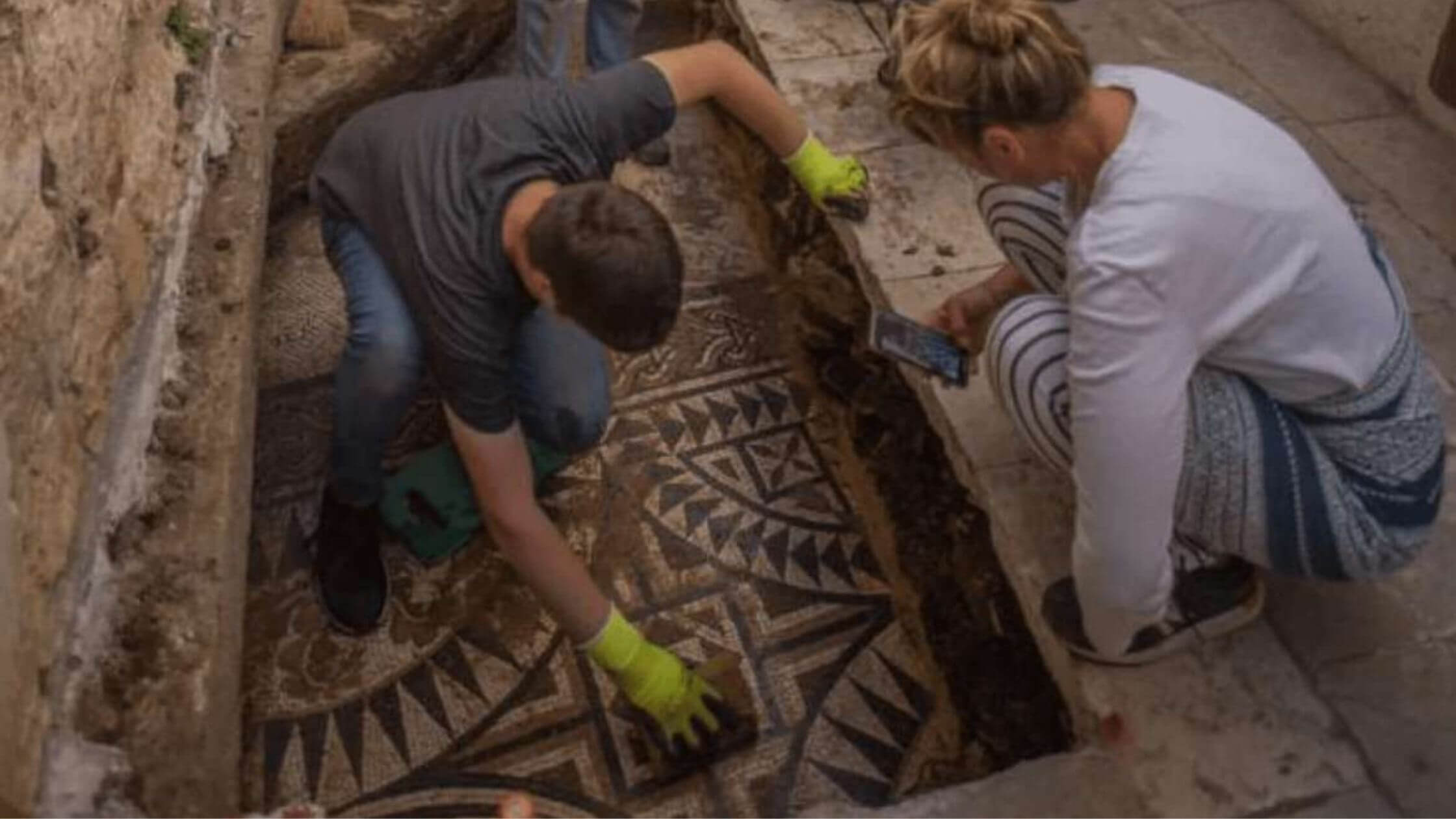
(Image: Vilma Matulic)
1.00 p.m. - 2.00 p.m.
Time for lunch! Before moving to Croatia, I had no clue that the pizzas here were outstanding. I guess it’s difficult when you’re overshadowed by neighboring Italy who arguably invented the dish. But what’s not to like about a wood-fired, slightly charred thin crust, tangy tomato base with innovative toppings? And the icing on the cake, it's a quick, cheap, and filling meal on its own.
So, you know where this lunch recommendation is going. Head on over to Mola Podloža and treat yourself to a Pharos pizza - think breakfast in pizza form, complete with bacon and runny egg. This, paired with an ice-cold beer makes a perfect lunch in my books, all for around 100 kuna (€13).

Dalmatian prosciutto makes a fantastic pizza topping. (Image: Pixabay)
2.00 p.m. - 5.00 p.m.
As much as you’d want to take a nap right now, I’d suggest a visit to the Stari Grad Plains. Stari Grad is home to one of the oldest cultivated plains in the world which dates back over 2,400 years when the Greeks colonized Hvar Island in the 4th century.
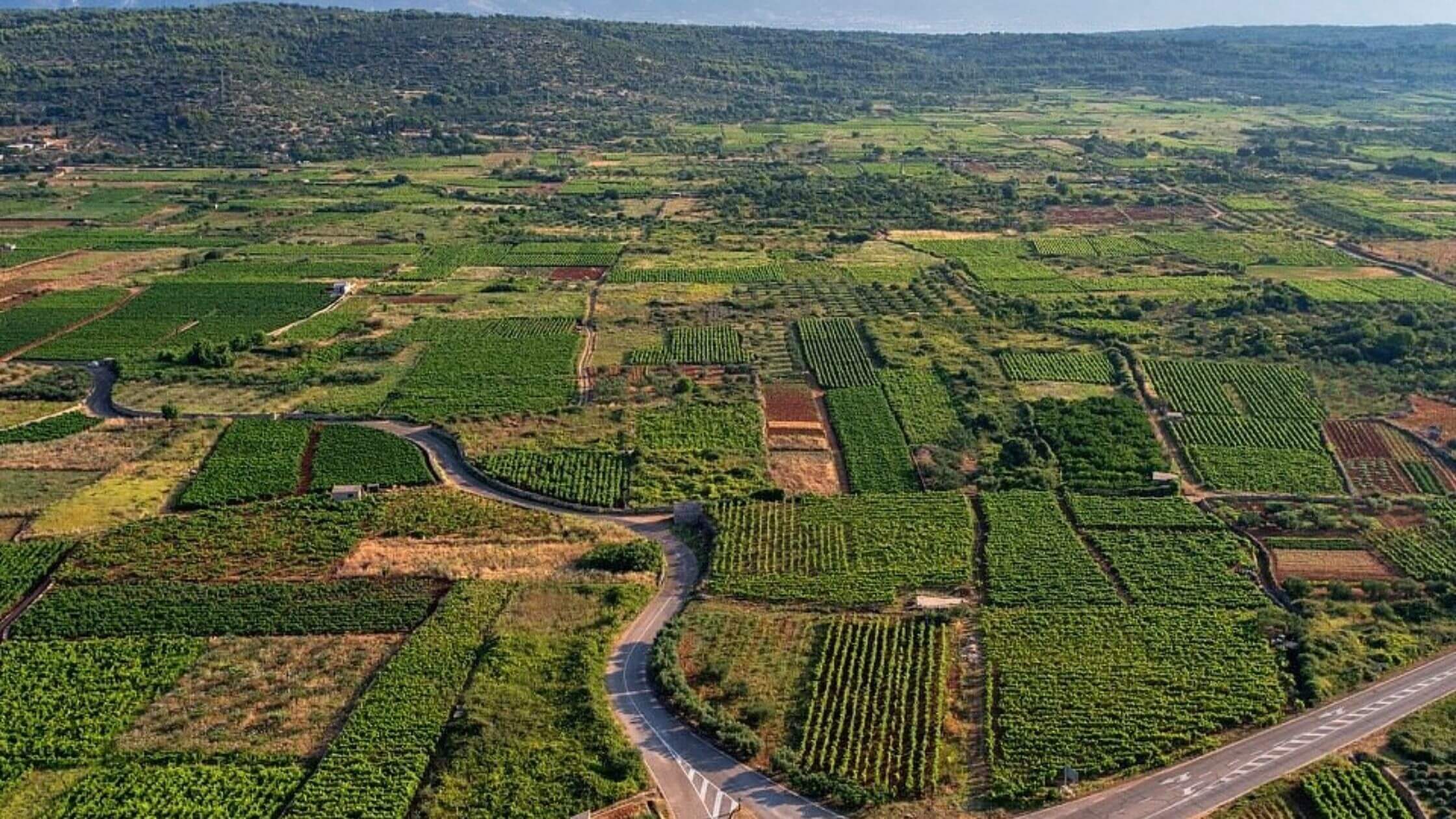
The same crops from centuries ago still grow today. (Image: Visit Hvar tourist board/Facebook screenshot)
For over 2 millennia, locals have maintained the plans in almost their original form, so much so that in 2008, the plains were declared a UNESCO world heritage site for being one of the last remaining ancient Greek agricultural plains in the Mediterranean. Today, they grow the same crops as the 4th century Grecians – olives and grapes, producing some of the best olive oil and wine in the world.
While you can opt to walk around the plains, I’d prefer to rent a bike at one of the many kiosks clustered along the Riva and explore at your own pace. Stop and check out the ancient ruins along the way, sample some olive oil, or enjoy a glass of local wine at one of the restaurants in the area (e.g., Hora, Rugonj, Dionis). The best time to visit is from end-May to mid-July since it coincides with the Lavender Festival, and you’ll be able to avoid the intense heat of high Summer.
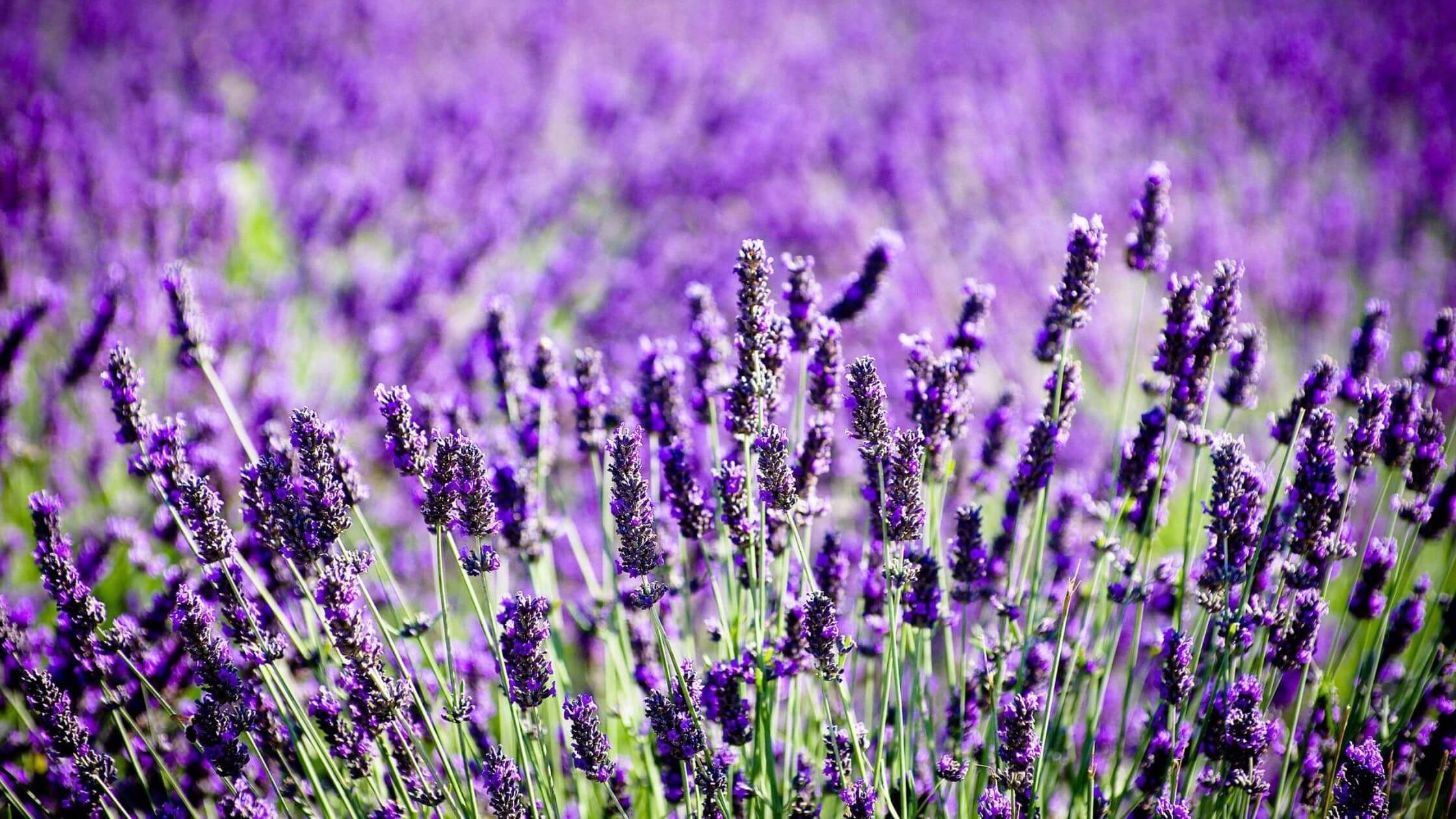
Lavender bushes bloom between May-July. (Image: Pixabay)
5.00 p.m. - 6.30 p.m.
After returning your bikes to the Riva, it’s time to head back to your hotel to complete the check-in process and freshen up for a casual evening in Stari Grad.
6.30 p.m. - 8.00 p.m.
For our final activity today, you may want to watch the sunset from Glavica Hill. While Glavica Hill is considered a hike, I’ve made it up with relative ease in just sandals (not the heeled kind though!). The path is well marked, and the entire trail is shaded by Mediterranean pine trees which provides some reprieve from the afternoon heat.
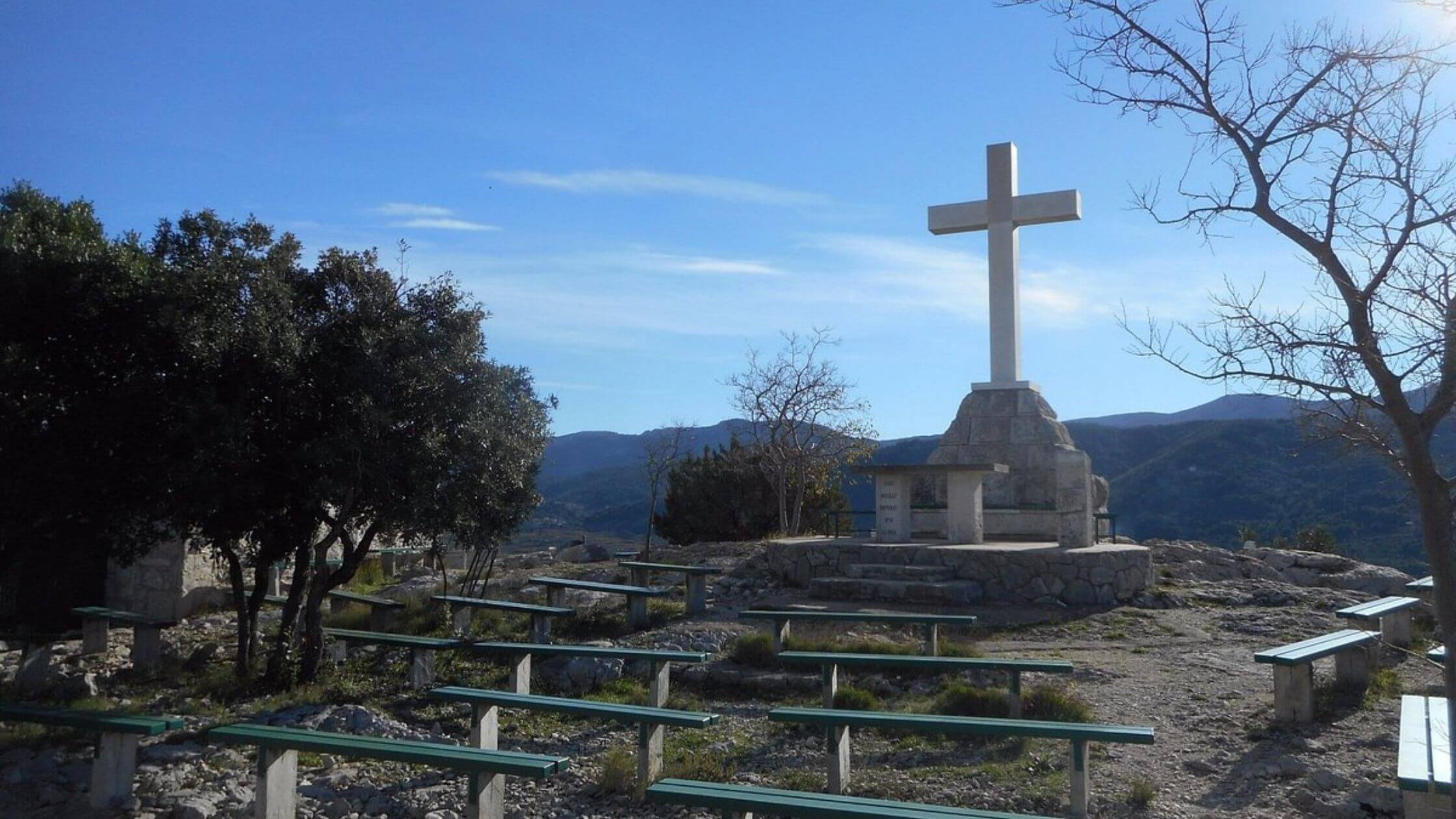
A breathtaking view awaits you at the top of Glavica hill. (Image: Steven D/Tripadvisor screenshot)
Before starting the 20–25-minute walk to the top, head to a grocery store or TISAK to grab a couple of drinks, so that you’ll be able to sit and watch the sunset as it illuminates Stari Grad and the neighboring island of Brač. The sunsets in Croatia are some of the most dynamic I’ve ever seen, with the horizon turning shades of blues, purples, oranges, and pinks before the teal blue of the evening blankets the sky.
8.00 p.m. - 10.30 p.m.
After a day of walking and biking, time to wind down at one of the most authentic, family-run restaurants in the city – Blue Doors Restaurant. With its courtyard seating, you’re treated to stunning views of the harbor, augmented by warm service and a romantic atmosphere, complete with dim lighting and soft music.
Try their seafood plate for 2, piled high with fish and seafood freshly caught that morning, and a Dalmatian signature, the black risotto made with squid ink. No meal is complete without a refreshing bottle of their own Prošip or Graševina, perfect for sipping on a warm summer evening while watching the fishing boats bob along with the gentle waves.
With such an activity-packed day, it might be time to wrap things up in Stari Grad in preparation for Part 2 in Hvar town where we’ll kick start the day with one of my favorite cafes on the island.
How to get from Stari Grad to Hvar by bus?
Getting around Hvar Island without your own ride is quite straightforward. There is only one bus service between Stari Grad-Hvar run by Čazmatrans. Bus services begin at 6.30 a.m. and run 7 times a day for the 30-minute journey, which costs around 25 - 35 KN (€3.50 - €5) per trip which you pay with cash when you board.
You may have noticed that our 24 hours in Stari Grad did not allocate any beach time in the crystal waters of Hvar Island, but the fun’s not over! I promise there’ll be plenty of time in the sun and sea when we reach Hvar Town. So, continue to watch this space for suggestions on spending 24 hours in Hvar Town!
(€1 = 7.54 kuna)
For more on travel in Croatia, follow TCN's dedicated page.
Suncani Hvar Continues Investment Cycle: New Riva Marina Hotel Opens in June!
May 4, 2022 - The new-and-improved Riva Marina Hotel by Suncani Hvar opens in Hvar town just in time for the summer!
The start of summer is well and truly around the corner, though we're already feeling a breath of what it used to be with a tourism boom since the long Easter holiday weekend. With Covid measures lifted and travelers back to planning trips as scheduled, all forecasts reveal a standout summer ahead, which will be enhanced this year on Hvar thanks to the newly renovated Riva Marina Hotel.
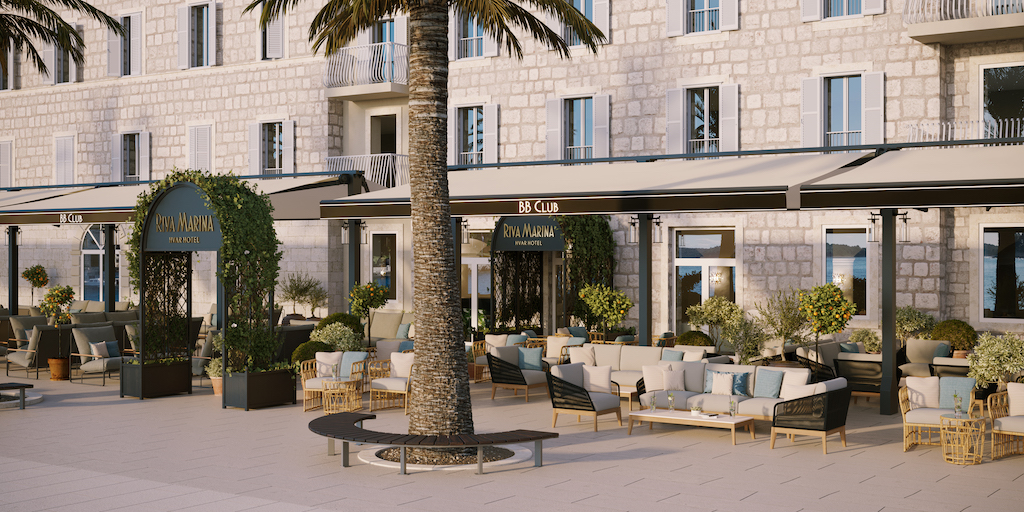
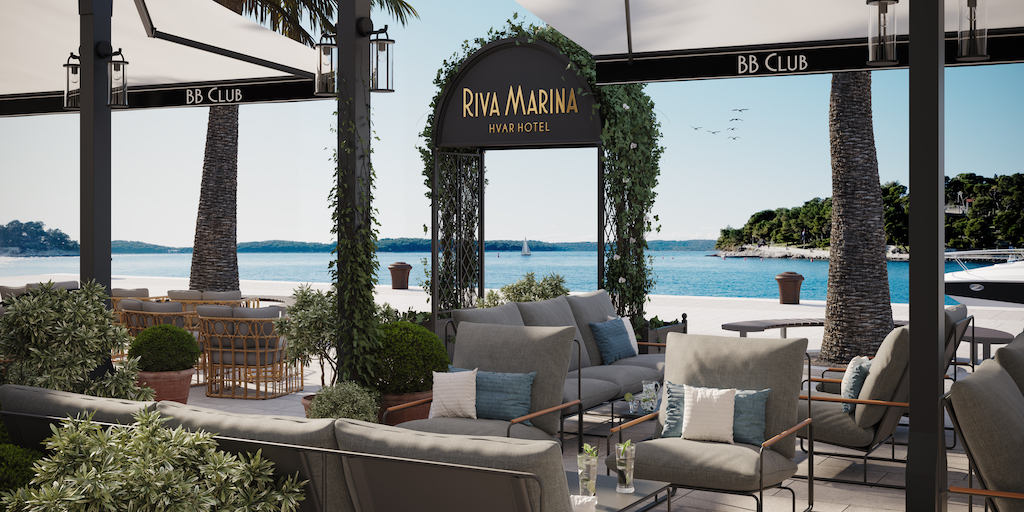
Namely, Suncani Hvar Hotels continues with intensive investments in 2022 to strategically reposition its portfolio towards high-quality offers and services. The most significant investment this year is the complete renovation of the Riva Marina Hotel, worth 40 million kuna. The planned opening of the newly renovated hotel is at the beginning of June.


Hotel Riva, located in the center of Hvar, is one of the first hotels in Hvar town, opening in 1914, precisely 15 years after the historic Hotel Elisabeth. It was named Hotel Kovačić after the initial founder of the hotel and named 'Riva' in 2006 when it was completely renovated. In 2022, this century-old hotel with striking and original architecture will change its name to Riva Marina, emphasizing its first-class position in the heart of Hvar's marina. The hotel is intended for guests who expect superior service and high-quality accommodation and will primarily be focused on the British and American markets.
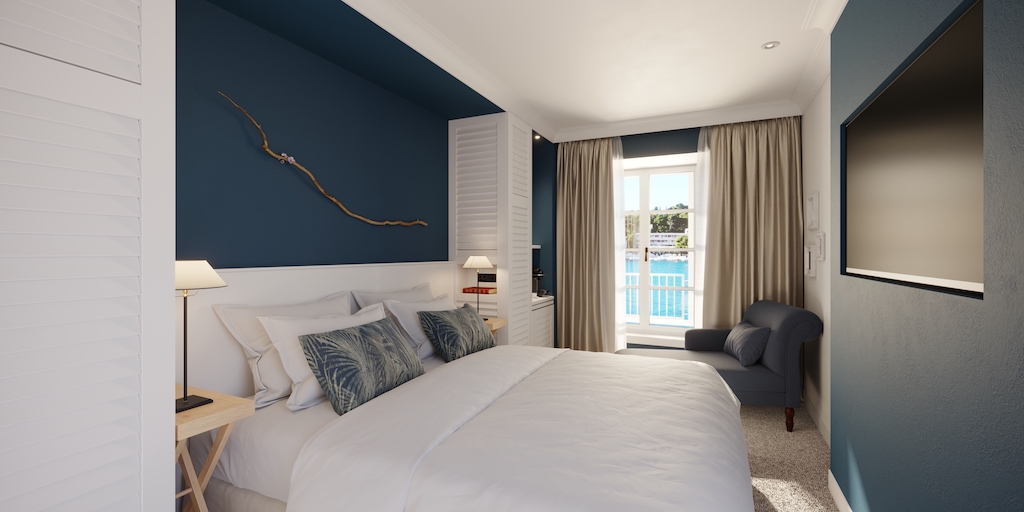
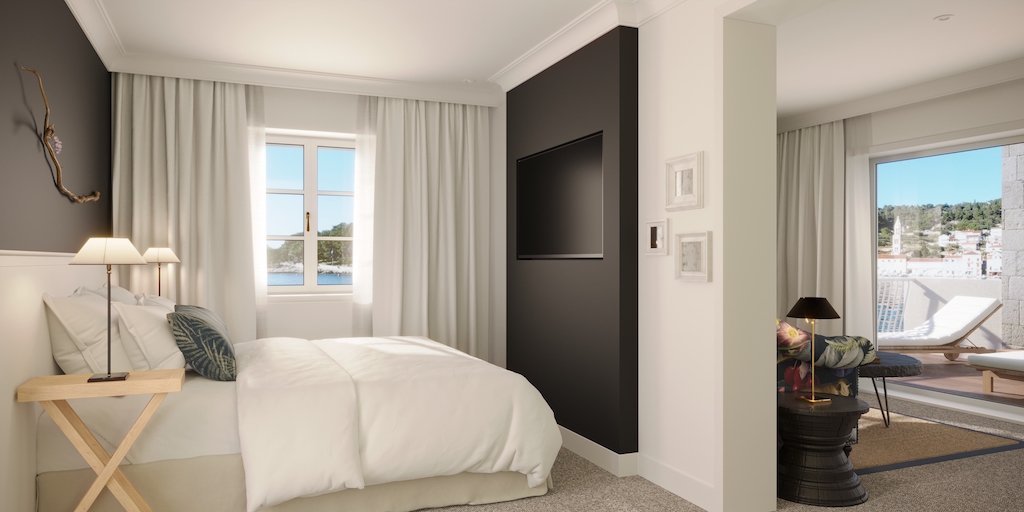 "Today, trends in the hotel industry are changing rapidly, and it is important to keep up with new challenges and competition, both in Croatia and in the wider world market. The Riva Marina hotel renovation confirms the company's development strategy, aimed at continuously improving the quality of portfolios and services for high-paying guests, which will further raise the competitiveness of the entire Hvar destination," said Gordana Tomičić, President of the Management Board.
"Today, trends in the hotel industry are changing rapidly, and it is important to keep up with new challenges and competition, both in Croatia and in the wider world market. The Riva Marina hotel renovation confirms the company's development strategy, aimed at continuously improving the quality of portfolios and services for high-paying guests, which will further raise the competitiveness of the entire Hvar destination," said Gordana Tomičić, President of the Management Board.

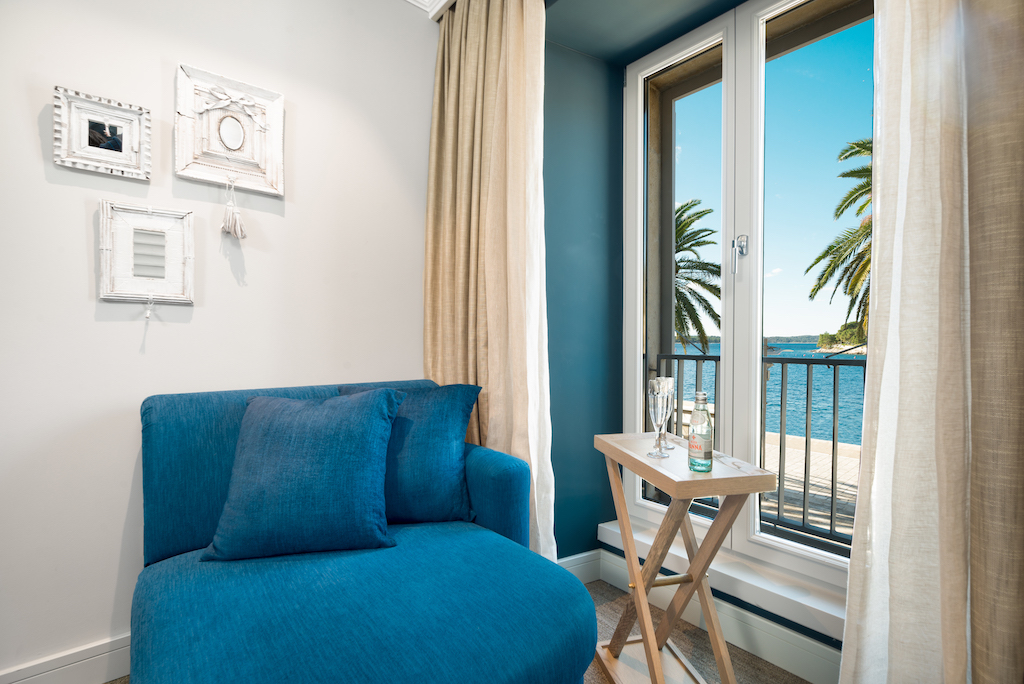

Thus, the Riva Marina Hotel will have 50 new unique rooms and suites ready for this season, providing every guest with complete comfort and enjoyment. Carefully designed and executed interior design further emphasizes the historic building itself, and its quality continues the direction harmonized with the most prestigious Hvar hotel Palace Elisabeth. The newly renovated hotel will also have a new restaurant and bar concept, designed according to the latest standards and adapted to modern world travelers. Guests will enjoy a variety of delicacies and drinks on the iconic outdoor terrace that offers a unique view of the yachts and marina.

The project was entrusted to the architectural studio Tissa from Poreč, the interior design by Oto Blaha, and the contractor Kvantum from Zagreb.
For more, make sure to check out our dedicated lifestyle section.
Ancient Adriatic Treasures Discovered Near Hvar
April 15, 2022 - Significant progress has been made in the research of the seabed around Hvar, testifying to the island's importance as far back as ancient times thanks to new Adriatic treasures found.
As 24Sata writes, iron ship cannons, amphorae for the transport of wine and olive oil, ceramic vessels, and many other items are just some of the findings of the latest research on the seabed of the island of Hvar. The findings prove that Hvar was an important maritime center 3000 years ago, in fact, one of the "guardians" of traffic in the Adriatic Sea. Research of the Hvar seabed has been going on for decades, and the last one was conducted by the company Khantaros, along with the Art Academy of the University of Split which both specialise in underwater research. All was done with the support of the Split-Dalmatia County through the project "Maritime is good!". According to everything that was found, Hvar was one of the important points for the control of maritime routes and the establishment of maritime dominance in the Adriatic and the eastern Mediterranean during late antiquity.
In certain positions that show the highest density and value of material archaeological research using a probe will continue, with expectations of finding extremely valuable archaeological artifacts. This research could provide key information about the history and archeology of Hvar and Dalmatia in general. 24Sata spoke about the details with the head of the research, Teo Katunarić Kirjakov, a senior lecturer at the Academy of Arts of the University of Split:
“Near the island of Šćedro, which means ‘Merciful Island’ in Old Slavonic, a real multitude of traces of life from all periods have been found. Šćedro has always been an island that has protected sailors in its safe harbours, from prehistoric times to the present day”.
However, the "Merciful Island" failed to provide a haven for a cargo ship with wine amphorae from the second or first century BC, which was caught in a storm and violently pulled to the seabed. Neatly arranged amphorae of the ship's cargo still lie intact in the depths of the sea. It is the only fully preserved ancient shipwreck in the Split-Dalmatia County and as such we must preserve it, said Tea Katunarić Kirjakov and added that extremely valuable finds were discovered in the bay of Stari Grad:
“The bay of Stari Grad is deep and well protected from almost all winds, and people have lived along the shores of the bay since prehistoric times. And then in 385/384 BC the Greeks from the island of Paros founded a colony at the bottom of the bay of today's Old Town and named it Faros”.
The Greeks not only significantly changed the appearance of the islands they occupied but also the appearance of the coast and the seabed of the bay. It is not certain what the seashore next to the town and the bay in front of it looked like in ancient times, but in the area of the Bonj bay, an artificial embankment along the rocky shore is visible. This is perhaps the most valuable and the only preserved part of the built ancient coast, as explained by Katunarić Kirjakov. Near the town of Sućuraj, in the far east of the island of Hvar, numerous valuable finds were also discovered:
“The eastern cape of the island of Hvar, Cape Sućuraj, and its deep well-protected bay was an unavoidable port in that waterway, while the oldest underwater find in the area is a Greek-Illyrian helmet from the fifth century BC”.
Finds from all periods have been recorded in the wider waters of Sućuraj, including a Roman shipwreck and a fighter plane from World War II - concluded Tea Katunarić Kirjakov, who went on to describe her personal experience of diving among objects hundreds and thousands of years old:
“It's a magnificent thing. The most impressive find is the Roman shipwreck near Šćedro, where all artifacts have been completely preserved, unlike many other locations that were devastated. By the way, parts of a Roman villa with a breakwater are also being explored under the sea near Šćedro. It is possible that the Roman ship that sank near the island was sailing toward it. And when you dive in and arrive at that world of peace and quiet that you disrupted after two thousand years, it’s simply indescribable. We must preserve such locations, we must not allow their devastation, concluded Katunarić Kirjakov.
24Sata also discussed the latest research with Igor Mihajlović, a senior conservator and archaeologist at the Department of Underwater Archeology of the Croatian Conservation Institute, who researched several shipwrecks in the Hvar area:
“The most recent site currently being explored is a shipwreck in the Pakleni Islands, which can be dated to the 17th century.
Three large iron anchors, six iron cannons, fragments of glass cups, several specimens of maiolica-type ceramic vessels, and numerous items related to the ship's weapons were found.
The interesting thing about this shipwreck is that the probe in the stern area found bone remains of a 170 cm tall man. Along with the bones, a bronze saint's medal from Rome was found, with the image of St. Longinus piercing Jesus on the Cross. These findings indicate a sudden sinking of a ship caused by extremely bad weather or an attack by another ship.
An extremely rare find was collected from the site – a ship bell made of bronze. So far only four ship bells from the period from the 16th to the 18th century have been found, concluded Mihajlović.
For more, check out our lifestyle section.


